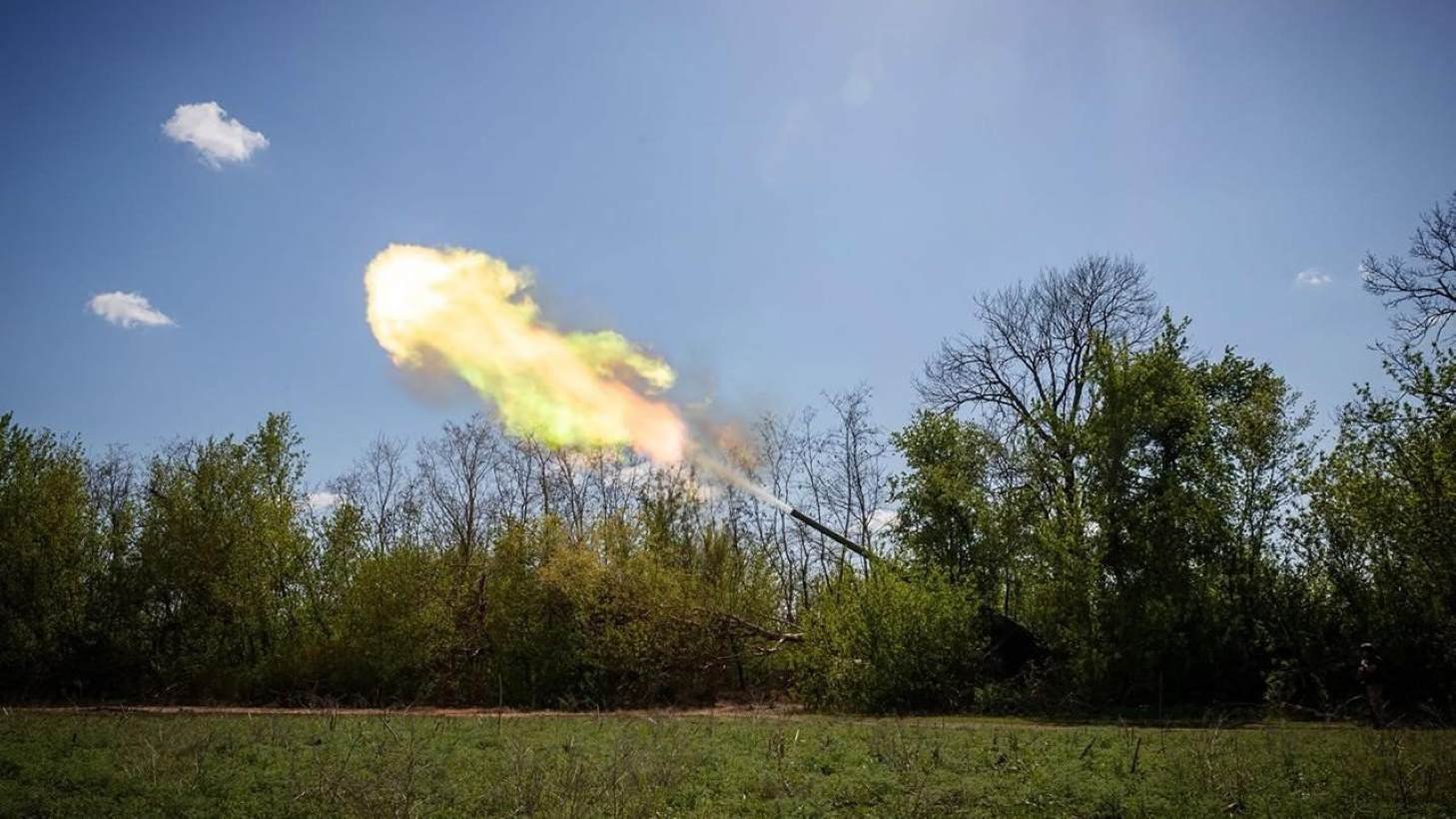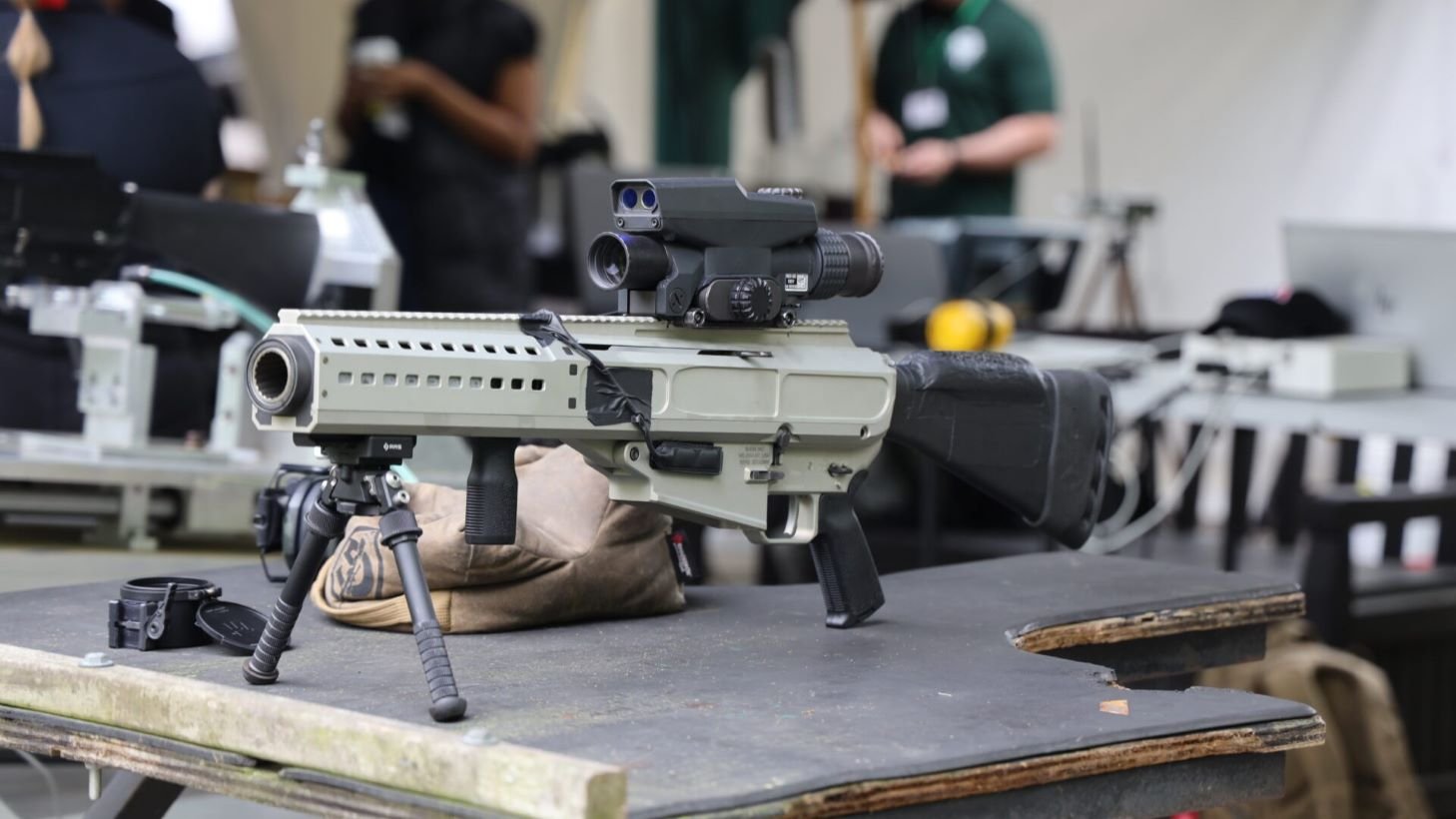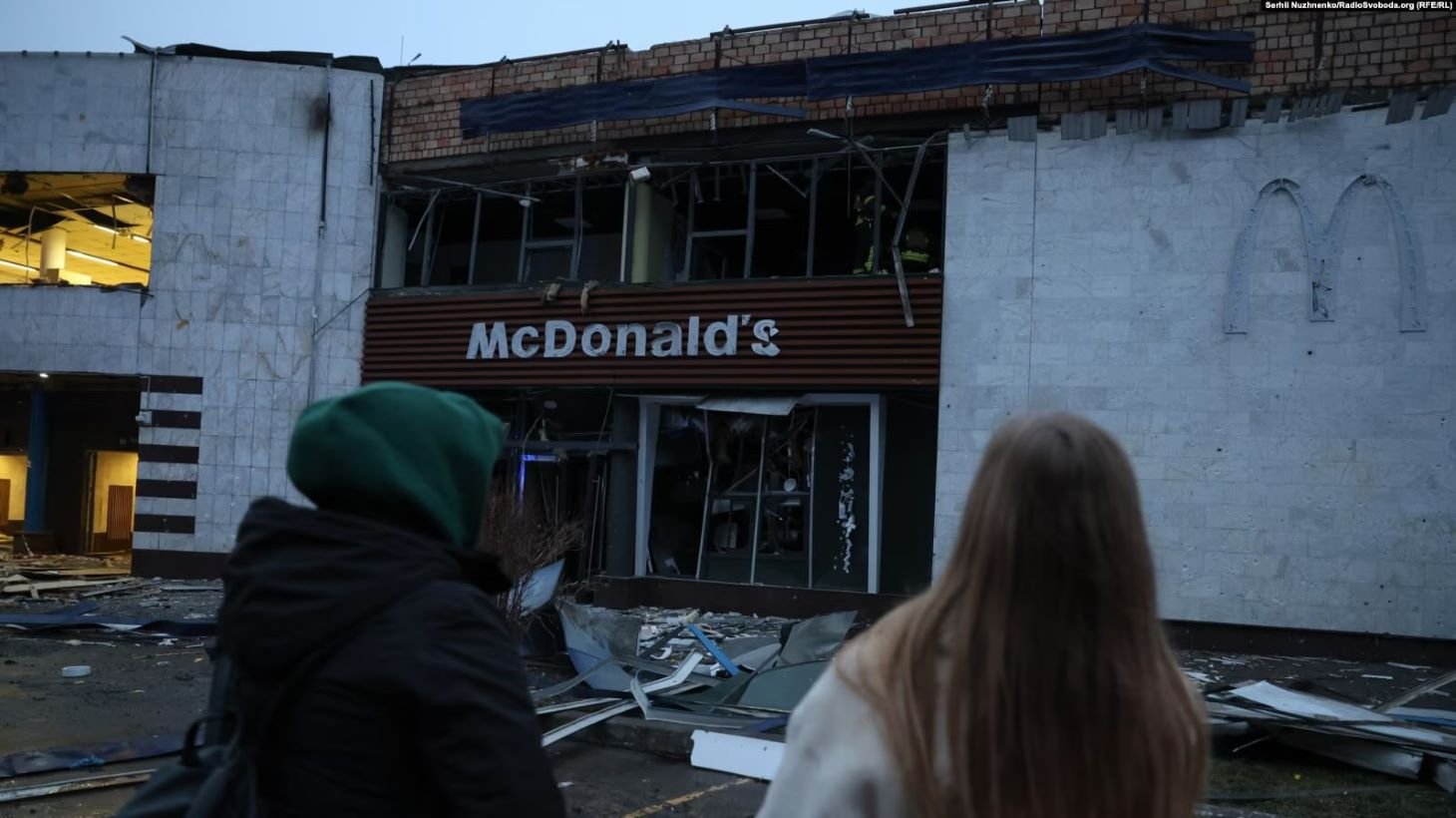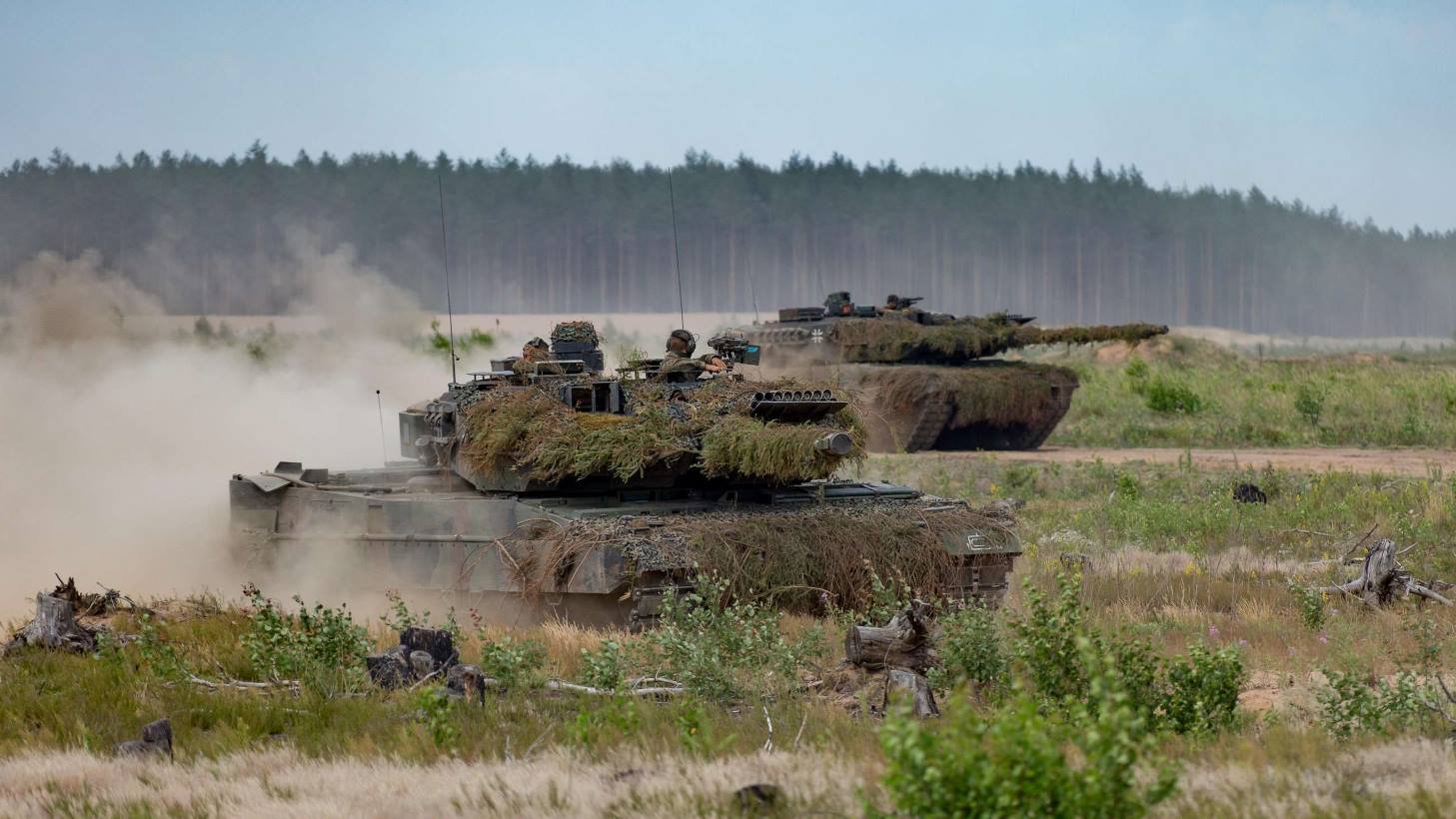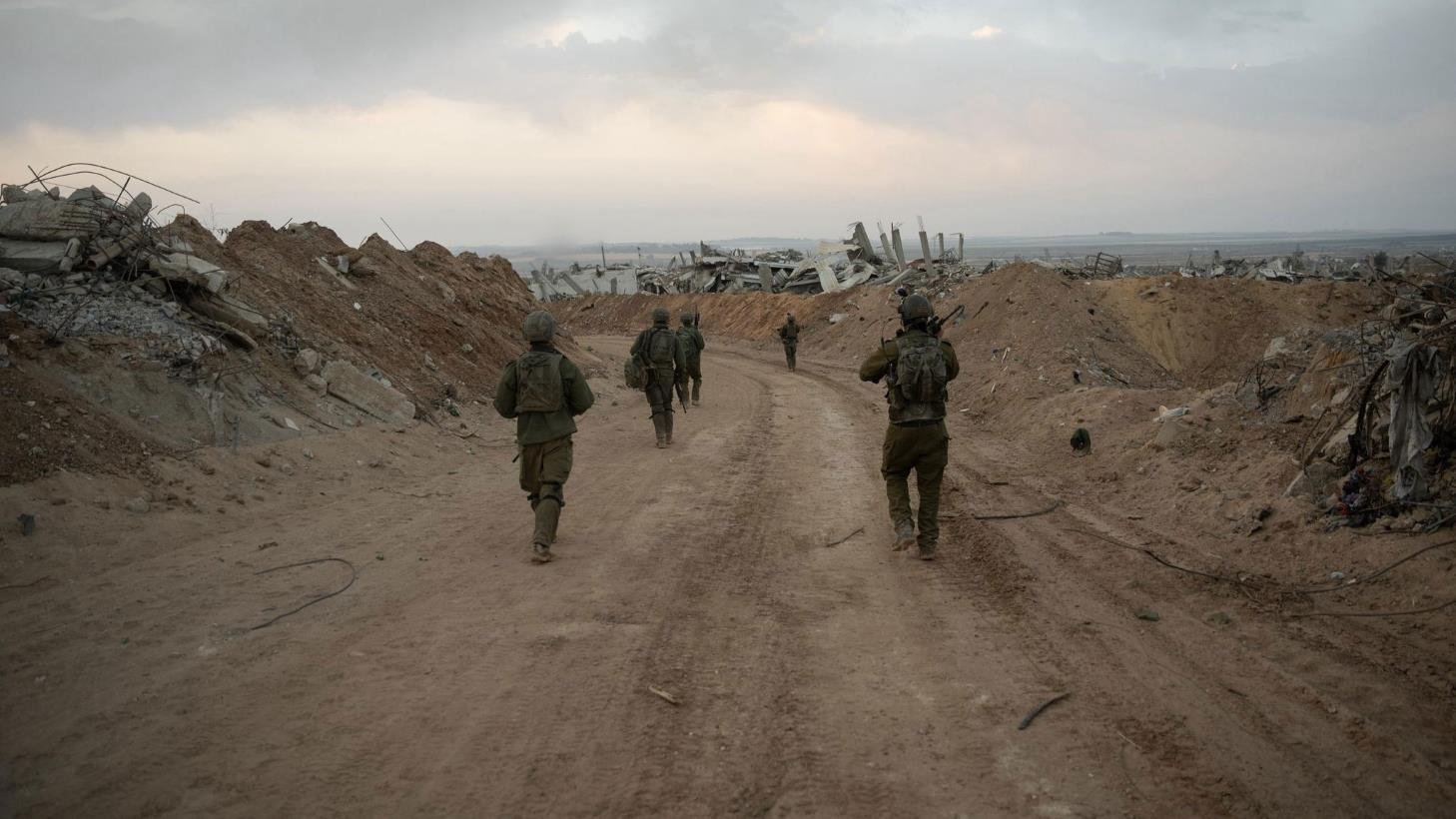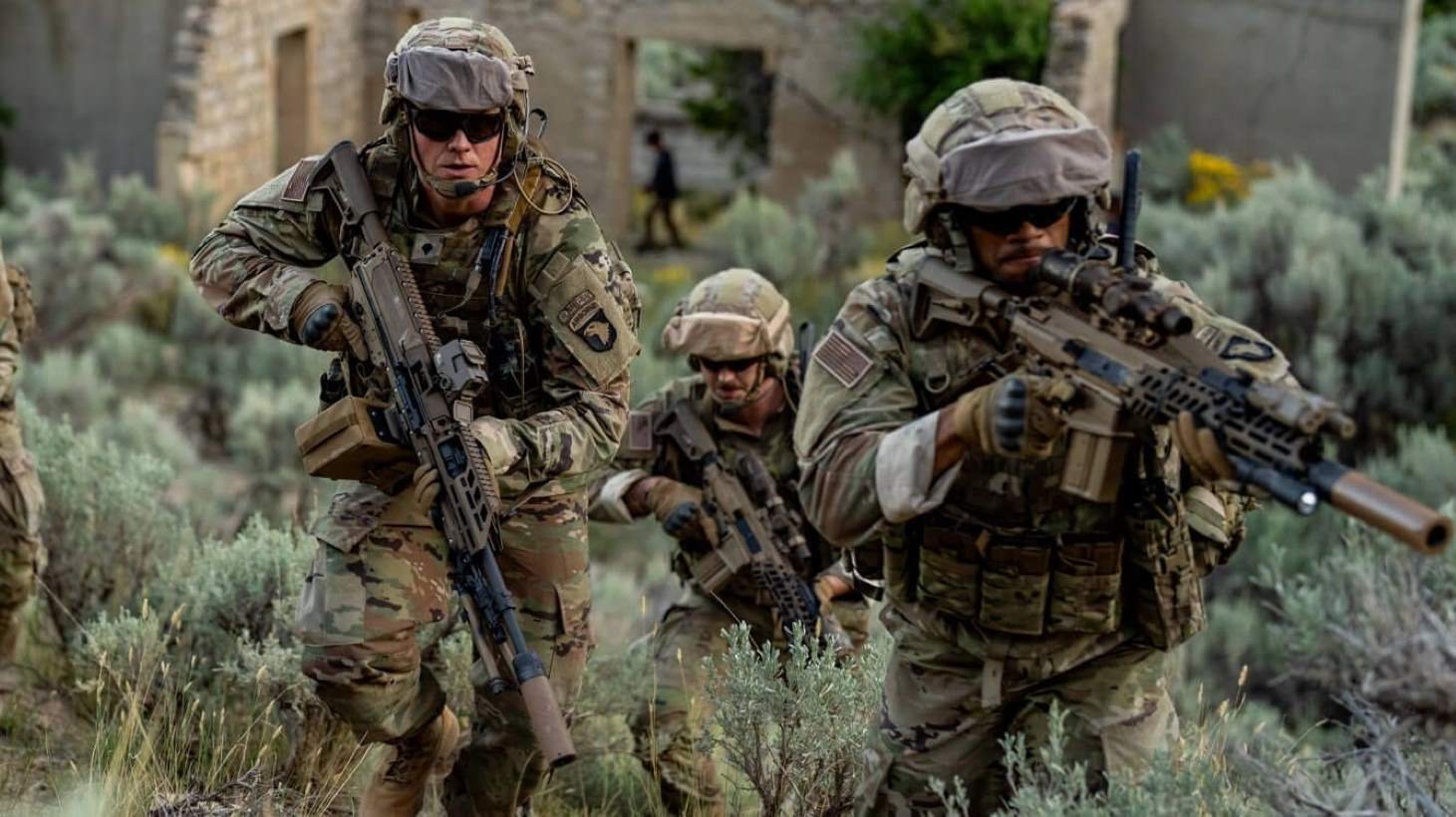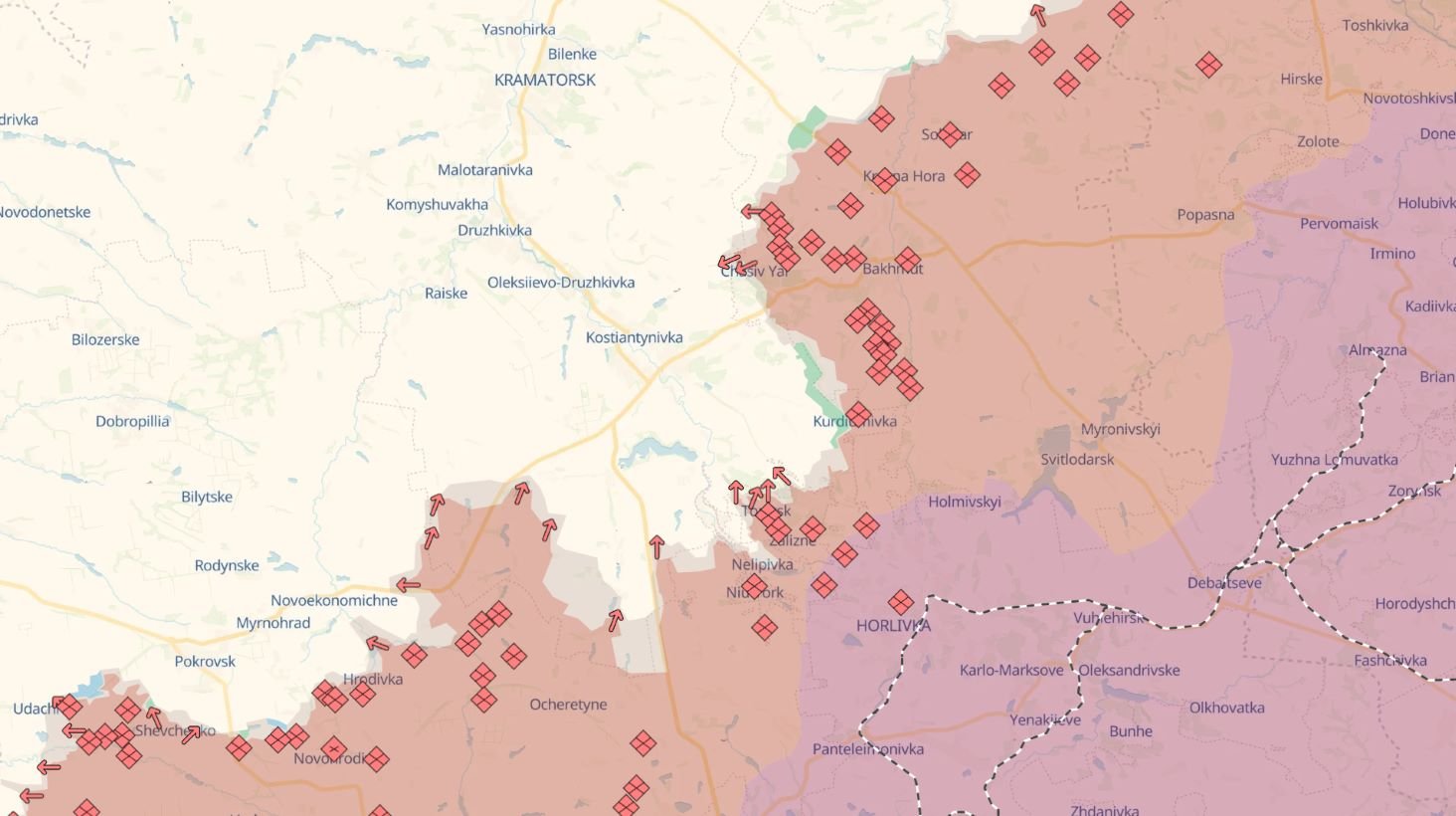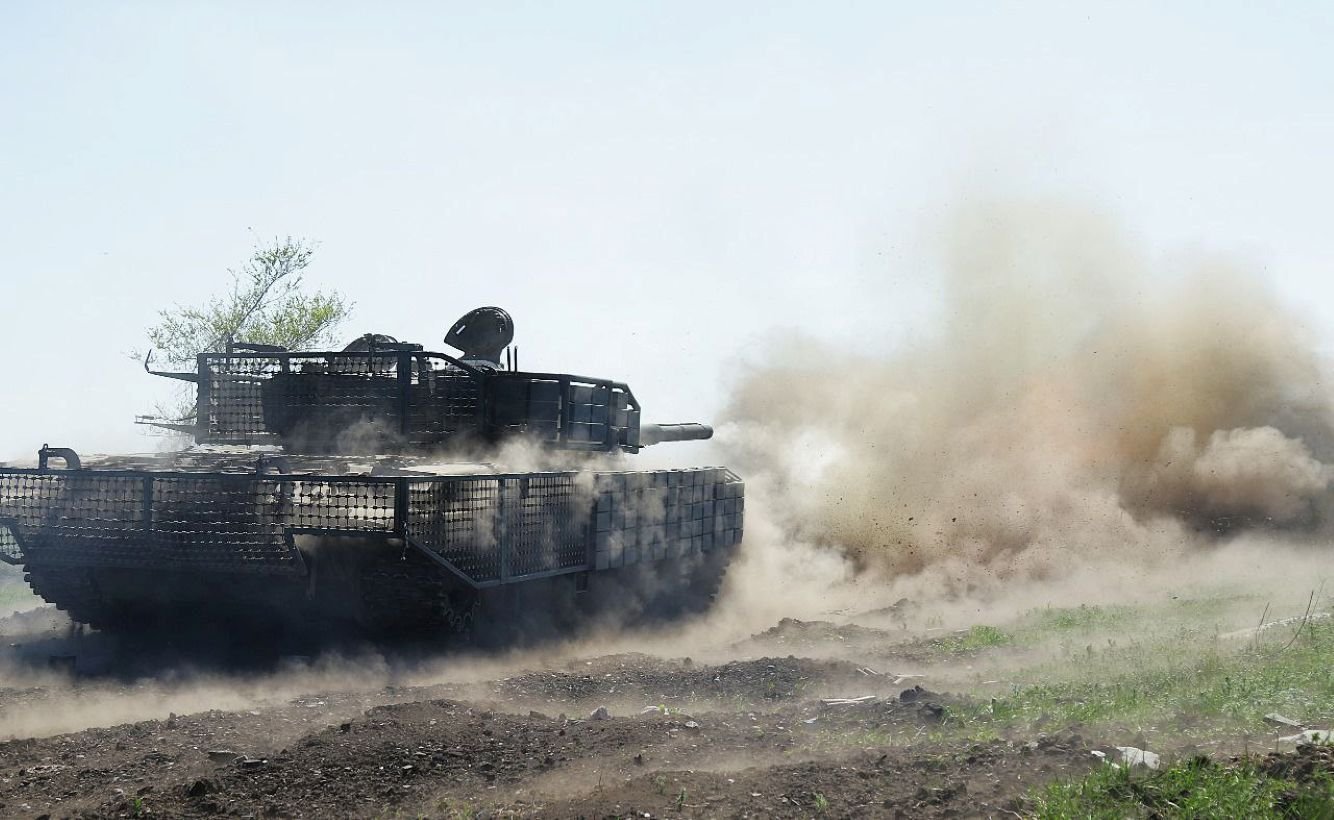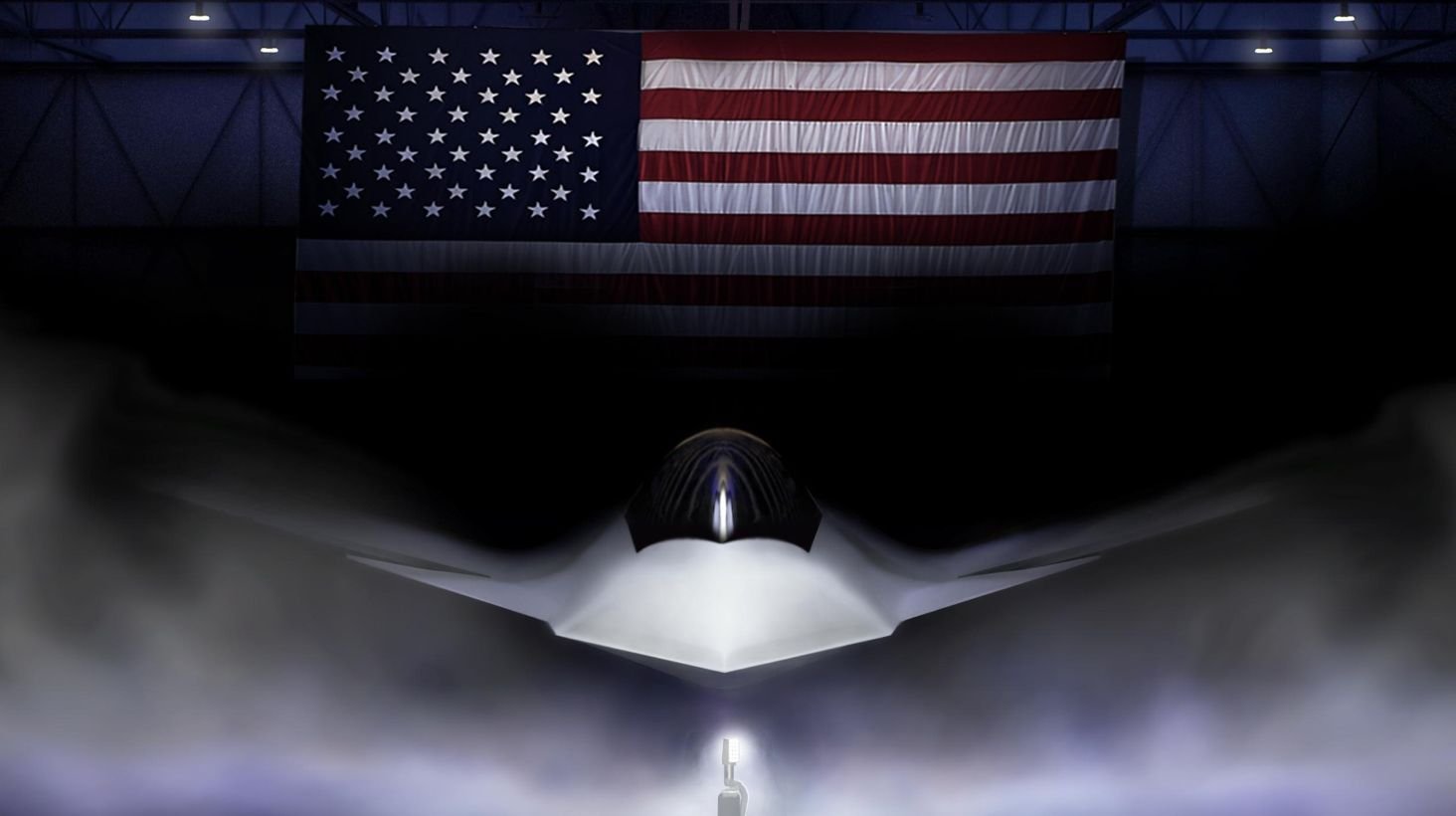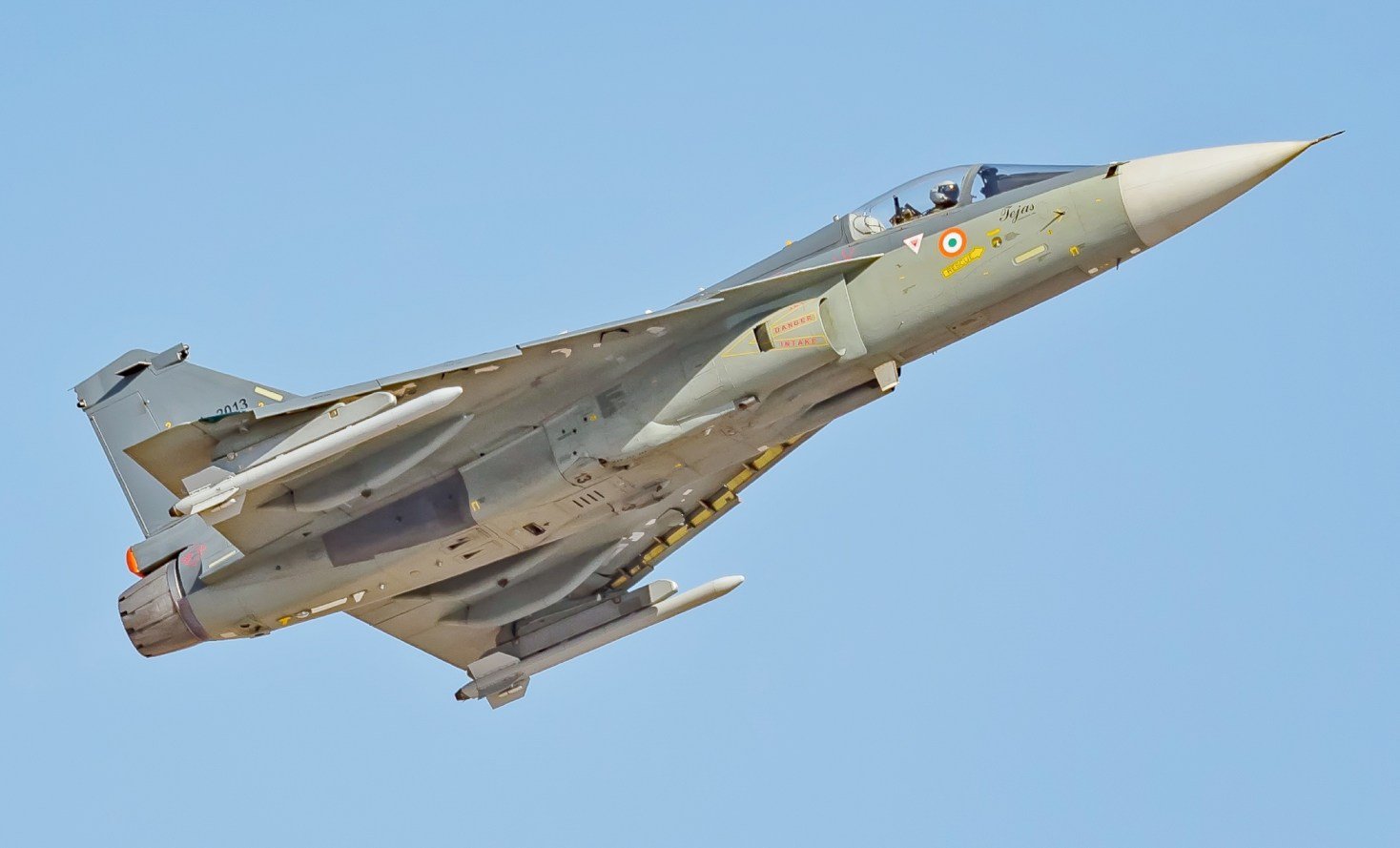-
Posts
790 -
Joined
-
Last visited
Content Type
Profiles
Uncrowned Armory News
Prepping Cookbook
Conspiracy Theories
Uncrowned Tactical Sports News
Prepping
Forums
Events
Everything posted by Uncrowned Guard
-
USS Harry S. Truman Carrier Group Returns After Prolonged Combat Deployment The USS Harry S. Truman and its accompanying strike group have concluded a landmark eight-month deployment, returning to Naval Station Norfolk following intensive combat operations in the Middle East. The deployment, marked by sustained action against Houthi forces and other regional threats, stands out as one of the United States Navy's most significant recent operations. A Pivotal Role in Middle Eastern Naval Operations The Truman Carrier Strike Group arrived in the Middle East in December 2024, joining an ongoing multinational effort to secure vital shipping lanes threatened by Houthi missile and drone attacks. The group replaced the USS Abraham Lincoln and immediately integrated into a high-tempo operational environment. Throughout their deployment, the Truman’s sailors and aviators launched approximately 11,000 sorties, amassing 25,000 flight hours and conducting 22 underway replenishments, according to Admiral Daryl Caudle of U.S. Fleet Forces Command. Their efforts were central to Operation Rough Rider, which involved sustained airstrikes and maritime security missions across Houthi-controlled regions of Yemen. The carrier group was also tasked with broader regional deterrence, reflecting the escalating complexity and range of threats in the area. Combat Action and Operational Challenges While the deployment showcased American naval power, it was not without setbacks. Early in the mission, the Truman group participated in one of the most intense naval battles of the Red Sea conflict, with missile and rocket exchanges between U.S. forces and Houthi fighters. During this engagement, the USS Gettysburg mistakenly downed a Truman-based F/A-18F Super Hornet; both crew members survived with minor injuries, marking the only loss of a crewed U.S. aircraft in over 18 months of hostilities. In addition to their operations in the Red Sea, the air wing executed significant bombing campaigns in Somalia, targeting ISIS positions as regional security challenges expanded. The deployment was further complicated by a collision with the merchant vessel Besiktas-M near Port Said in February. Repairs necessitated an emergency port call in Greece and resulted in a leadership change, with Captain Christopher Hill assuming command. Additional flight deck incidents, including the loss of a Super Hornet and its tow during maneuvers, tested the resilience of the ship’s crew. Homecoming and Reflections on Service The return of the Truman and its strike group was celebrated with emotion and relief in Norfolk, where families reunited after the extended 251-day mission. Banners and the presence of Navy officials underscored the significance of the deployment. Rear Admiral Sean Bailey, speaking on the ship’s arrival, noted the campaign’s extraordinary demands. “There’s really nothing in comparison because of the tempo of operations, because of the continuous combat that these warriors saw,” Bailey remarked. Captain Hill echoed these sentiments, commending the crew’s determination under trying circumstances. As the geopolitical dynamics of the Middle East continue to evolve, Truman’s successful return marks the conclusion of a major chapter in U.S. naval operations. With the USS Carl Vinson strike group remaining on station, the Navy continues its mission to uphold maritime security and stability in critical global waterways. View full article
-
- uss harry s. truman
- houthi conflict
- (and 3 more)
-
Tensions Escalate as Russian Troop Buildup Strains Sumy Oblast The Ukrainian border region of Sumy Oblast is facing heightened uncertainty as reports of a substantial Russian military buildup intensify concerns over a possible large-scale offensive. President Volodymyr Zelensky has signaled that approximately 50,000 Russian troops have concentrated near the border, with local officials and frontline soldiers preparing for what could be a significant new front in the war. Russian Strategy: Buffer Zone and Gradual Advance On May 22, Russian President Vladimir Putin announced orders to establish a "security buffer zone" along the border areas. This declaration has corresponded with increased troop movements in the Sumy direction. While Russian forces have already seized several small villages, their broader operational intent remains unclear, with both Ukrainian commanders and outside analysts noting the incremental nature of these advances. Russian units have been employing small, mobile assault groups, often utilizing quad bikes for rapid incursions, tactics that have characterized much of their recent activity in the region. Access for journalists remains strictly curtailed, with the Security Service of Ukraine (SBU) limiting reporting from Sumy Oblast since Ukrainian forces withdrew from the adjacent Kursk region. The lack of detailed information from the Ukrainian military has added to the prevailing sense of uncertainty over the true scale and aims of the Russian presence on the border. Ukrainian Forces Brace Amid Manpower Challenges Ukrainian soldiers on the front lines report exhaustion and strain following prolonged fighting in Kursk Oblast earlier this year. With key units depleted after months of intense combat, including sustained attacks by Russian drones and glide bombs, questions have arisen about Kyiv’s ability to reinforce and fortify Sumy Oblast. The recent fall of four villages—Novenke, Zhuravka, Veselivka, and Basivka—to Russian forces underscores the challenges faced by Ukrainian defenders in the sector. Despite these setbacks, Ukrainian officials maintain that operations are under control, and there has been no indication of an uncontested Russian breakthrough. However, sources within the defense establishment acknowledge that should Russia succeed in establishing its proposed buffer zone, further advances could follow. Civilians Caught in the Crossfire: Evacuations Ongoing Sumy Oblast’s civilian population continues to bear the brunt of these military developments. The region, regularly shelled since the outbreak of the full-scale war in 2022, is undergoing a new wave of evacuations. Nearly 56,000 residents have been relocated under mandatory orders, and local authorities are urging further caution in exposed municipalities. While the threat in some areas remains contained for now, uncertainty and anxiety persist among those remaining near the front lines. Analyst Perspectives: Strategic Value and Limits Independent military analysts suggest that while Russian activity in Sumy Oblast is likely to continue, the region may not be the primary focus of any broad summer offensive. Emil Kastehelmi of the Black Bird Group, which tracks conflict movements, notes that the slow pace and limited scale of Russian incursions point to a secondary front, perhaps aimed more at tying down Ukrainian resources than achieving rapid territorial gains. According to Kastehelmi, Moscow’s main strategic efforts are likely to remain concentrated further east, in the Donbas and potentially in Zaporizhzhia Oblast. Looking Ahead: Uncertainties and Strategic Calculus Both on the ground and at higher levels of command, the outlook remains ambiguous. Ukrainian soldiers express a mix of vigilance and resilience, emphasizing continued readiness despite relentless challenges. The evolving situation in Sumy Oblast is being closely monitored by military leaders and independent observers alike, as questions persist regarding Moscow’s long-term objectives and the possible trajectory of the conflict in the borderlands. As external actors, including the United States, continue to call for renewed peace negotiations, local dynamics on Ukraine’s northern frontier serve as a potent reminder of the war’s unpredictable and shifting nature. For now, Sumy stands at the intersection of careful defensive preparation and the ever-present risk of escalation.
-
- ukraine conflict
- russian military buildup
- (and 3 more)
-
Tensions Escalate as Russian Troop Buildup Strains Sumy Oblast The Ukrainian border region of Sumy Oblast is facing heightened uncertainty as reports of a substantial Russian military buildup intensify concerns over a possible large-scale offensive. President Volodymyr Zelensky has signaled that approximately 50,000 Russian troops have concentrated near the border, with local officials and frontline soldiers preparing for what could be a significant new front in the war. Russian Strategy: Buffer Zone and Gradual Advance On May 22, Russian President Vladimir Putin announced orders to establish a "security buffer zone" along the border areas. This declaration has corresponded with increased troop movements in the Sumy direction. While Russian forces have already seized several small villages, their broader operational intent remains unclear, with both Ukrainian commanders and outside analysts noting the incremental nature of these advances. Russian units have been employing small, mobile assault groups, often utilizing quad bikes for rapid incursions, tactics that have characterized much of their recent activity in the region. Access for journalists remains strictly curtailed, with the Security Service of Ukraine (SBU) limiting reporting from Sumy Oblast since Ukrainian forces withdrew from the adjacent Kursk region. The lack of detailed information from the Ukrainian military has added to the prevailing sense of uncertainty over the true scale and aims of the Russian presence on the border. Ukrainian Forces Brace Amid Manpower Challenges Ukrainian soldiers on the front lines report exhaustion and strain following prolonged fighting in Kursk Oblast earlier this year. With key units depleted after months of intense combat, including sustained attacks by Russian drones and glide bombs, questions have arisen about Kyiv’s ability to reinforce and fortify Sumy Oblast. The recent fall of four villages—Novenke, Zhuravka, Veselivka, and Basivka—to Russian forces underscores the challenges faced by Ukrainian defenders in the sector. Despite these setbacks, Ukrainian officials maintain that operations are under control, and there has been no indication of an uncontested Russian breakthrough. However, sources within the defense establishment acknowledge that should Russia succeed in establishing its proposed buffer zone, further advances could follow. Civilians Caught in the Crossfire: Evacuations Ongoing Sumy Oblast’s civilian population continues to bear the brunt of these military developments. The region, regularly shelled since the outbreak of the full-scale war in 2022, is undergoing a new wave of evacuations. Nearly 56,000 residents have been relocated under mandatory orders, and local authorities are urging further caution in exposed municipalities. While the threat in some areas remains contained for now, uncertainty and anxiety persist among those remaining near the front lines. Analyst Perspectives: Strategic Value and Limits Independent military analysts suggest that while Russian activity in Sumy Oblast is likely to continue, the region may not be the primary focus of any broad summer offensive. Emil Kastehelmi of the Black Bird Group, which tracks conflict movements, notes that the slow pace and limited scale of Russian incursions point to a secondary front, perhaps aimed more at tying down Ukrainian resources than achieving rapid territorial gains. According to Kastehelmi, Moscow’s main strategic efforts are likely to remain concentrated further east, in the Donbas and potentially in Zaporizhzhia Oblast. Looking Ahead: Uncertainties and Strategic Calculus Both on the ground and at higher levels of command, the outlook remains ambiguous. Ukrainian soldiers express a mix of vigilance and resilience, emphasizing continued readiness despite relentless challenges. The evolving situation in Sumy Oblast is being closely monitored by military leaders and independent observers alike, as questions persist regarding Moscow’s long-term objectives and the possible trajectory of the conflict in the borderlands. As external actors, including the United States, continue to call for renewed peace negotiations, local dynamics on Ukraine’s northern frontier serve as a potent reminder of the war’s unpredictable and shifting nature. For now, Sumy stands at the intersection of careful defensive preparation and the ever-present risk of escalation. View full article
-
- ukraine conflict
- russian military buildup
- (and 3 more)
-
Barrett and MARS Secure Victory in Army’s xTech Soldier Lethality Competition Barrett Firearms and MARS Inc. have emerged as the winners of the U.S. Army’s xTech Soldier Lethality challenge, positioning themselves to deliver a groundbreaking 30mm grenade rifle system under the Precision Grenadier System (PGS) program. This achievement marks a pivotal development in the Army’s ongoing efforts to enhance the effectiveness of individual soldiers on the modern battlefield. Rapid Development of a Next-Generation Weapon System In response to the Army’s call for rapid innovation, the Barrett-MARS collaboration produced a fully integrated weapon platform in just six months. Their design—a shoulder-fired, semi-automatic, magazine-fed rifle—is engineered to engage both concealed enemy combatants and small unmanned aerial systems (UAS) with precision-guided munitions. This accelerated timeline underscores the team’s ability to meet urgent operational requirements with a practical, tested solution. Advanced Capabilities Tailored for Contemporary Threats The winning submission stands out for its integration of innovative technologies. The system features an advanced fire control unit and a suite of custom-designed 30mm ammunition. Working alongside partners AMTEC Corporation and Precision Targeting, Barrett and MARS delivered a comprehensive package that includes programmable air-burst, proximity-fuzed, point-detonating, and specialized close-quarters rounds. These varied munitions are designed to provide decisive overmatch against enemies protected by cover, as well as emerging aerial threats. A Strategic Leap in Individual Soldier Lethality The Precision Grenadier System is intended to grant soldiers the capability to address a wider array of tactical challenges with increased accuracy and effectiveness. By incorporating programmable air bursting and counter-UAS functionalities, the new system aims to bridge key gaps in current small-unit capabilities. Barrett leadership emphasized their ongoing commitment to fielding transformative technology, referencing past innovations like the Model 82 and MRAD MK 22, and highlighting the collaborative approach taken for the PGS development. Partnership and Agility at the Forefront Both Barrett and MARS attribute their success to a blend of technical expertise and close partnership. The rapid design and testing cycle, conducted in coordination with industry peers and the Army, demonstrates a model of agility and shared mission focus. Barrett’s leadership highlighted this synergy as instrumental in quickly translating requirements into a field-ready product, with the overarching goal of improving soldier survivability and mission accomplishment. Looking Ahead As the PGS initiative advances, the Army and its industry partners aim to further refine and operationalize these next-generation capabilities. With the Barrett-MARS team now moving forward to field their system, the Army continues to invest in solutions that enhance the lethality, adaptability, and protection of its forces amidst evolving battlefield threats.
-
- barrett firearms
- mars inc
- (and 3 more)
-
Barrett and MARS Secure Victory in Army’s xTech Soldier Lethality Competition Barrett Firearms and MARS Inc. have emerged as the winners of the U.S. Army’s xTech Soldier Lethality challenge, positioning themselves to deliver a groundbreaking 30mm grenade rifle system under the Precision Grenadier System (PGS) program. This achievement marks a pivotal development in the Army’s ongoing efforts to enhance the effectiveness of individual soldiers on the modern battlefield. Rapid Development of a Next-Generation Weapon System In response to the Army’s call for rapid innovation, the Barrett-MARS collaboration produced a fully integrated weapon platform in just six months. Their design—a shoulder-fired, semi-automatic, magazine-fed rifle—is engineered to engage both concealed enemy combatants and small unmanned aerial systems (UAS) with precision-guided munitions. This accelerated timeline underscores the team’s ability to meet urgent operational requirements with a practical, tested solution. Advanced Capabilities Tailored for Contemporary Threats The winning submission stands out for its integration of innovative technologies. The system features an advanced fire control unit and a suite of custom-designed 30mm ammunition. Working alongside partners AMTEC Corporation and Precision Targeting, Barrett and MARS delivered a comprehensive package that includes programmable air-burst, proximity-fuzed, point-detonating, and specialized close-quarters rounds. These varied munitions are designed to provide decisive overmatch against enemies protected by cover, as well as emerging aerial threats. A Strategic Leap in Individual Soldier Lethality The Precision Grenadier System is intended to grant soldiers the capability to address a wider array of tactical challenges with increased accuracy and effectiveness. By incorporating programmable air bursting and counter-UAS functionalities, the new system aims to bridge key gaps in current small-unit capabilities. Barrett leadership emphasized their ongoing commitment to fielding transformative technology, referencing past innovations like the Model 82 and MRAD MK 22, and highlighting the collaborative approach taken for the PGS development. Partnership and Agility at the Forefront Both Barrett and MARS attribute their success to a blend of technical expertise and close partnership. The rapid design and testing cycle, conducted in coordination with industry peers and the Army, demonstrates a model of agility and shared mission focus. Barrett’s leadership highlighted this synergy as instrumental in quickly translating requirements into a field-ready product, with the overarching goal of improving soldier survivability and mission accomplishment. Looking Ahead As the PGS initiative advances, the Army and its industry partners aim to further refine and operationalize these next-generation capabilities. With the Barrett-MARS team now moving forward to field their system, the Army continues to invest in solutions that enhance the lethality, adaptability, and protection of its forces amidst evolving battlefield threats. View full article
-
- barrett firearms
- mars inc
- (and 3 more)
-
Russia Launches Record Drone Attack on Ukraine Amid Escalating Conflict Russia has carried out its most extensive drone assault on Ukraine to date, launching a record 355 Shahed-type drones and decoys alongside cruise missiles in a wave of attacks that left at least six people dead and 24 injured in 24 hours across multiple Ukrainian regions, according to Ukrainian authorities on May 26. Unprecedented Aerial Offensive Targets Multiple Regions The latest barrage marks the third consecutive night of large-scale aerial strikes by Russian forces. Ukraine’s Air Force reported nine Kh-101 cruise missiles were launched from Tu-95MS bombers, while air defenses intercepted all nine missiles and 233 drones. An additional 55 drones were reportedly neutralized via electronic warfare measures or disappeared from Ukrainian radar systems. This strike surpassed a previous record set on May 25, when 298 drones were used in a single night, highlighting a rapid escalation in the intensity and volume of Russian aerial operations since the onset of the full-scale conflict. Civilians Across Ukraine Suffer Casualties and Infrastructure Damage Per Kyiv Independent, the coordinated attacks caused civilian casualties and extensive infrastructure damage in several oblasts: Kharkiv Oblast: Strikes in Kupiansk resulted in two deaths and three injuries. Glide bombs, various drones, and artillery fire reportedly damaged dozens of residential and commercial properties. Donetsk and Kherson Oblasts: Combined, these areas experienced at least seven fatalities and 10 injuries. Shelling and drone attacks struck homes, gas pipelines, social infrastructure, and telecommunications. Zaporizhzhia and Odesa Oblasts: Multiple settlements faced nearly 700 attacks, including significant air and drone strikes. Residential buildings, businesses, and vehicles suffered serious damage; in Odesa, a teenager was among the wounded. Kyiv and Surrounding Regions: A combined missile and drone attack led to explosions and property damage but caused no reported injuries, with air defenses intercepting most threats. Other regions, including Dnipropetrovsk, Khmelnytskyi, Mykolaiv, Sumy, and Cherkasy oblasts, also reported various degrees of drone or artillery attacks, resulting in additional casualties, property destruction, and the targeting of critical infrastructure. Regional Responses and Heightened Security Measures Poland reiterated its commitment to regional security by scrambling military aircraft overnight for a second consecutive night. The Polish Armed Forces put air defenses on high alert in response to Russian long-range aviation activity, reflecting growing security concerns among neighboring countries. International Reactions and Political Commentary In the wake of the intensified attacks, former U.S. President Donald Trump publicly condemned Russian actions, criticizing President Vladimir Putin for the escalation. Speaking to reporters in New Jersey, Trump expressed his dissatisfaction with Putin’s leadership, noting: “He’s killing a lot of people... I don’t know what the hell happened to Putin, I’ve known him for a long time.” Over the weekend, more than 600 drones and several dozen missiles were reportedly launched at Ukrainian targets, resulting in at least 12 deaths—three children among the victims—and injuring 79 people. Ukrainian President Volodymyr Zelensky has called on the United States and allies for a stronger response, warning that perceived silence and inaction could embolden the Kremlin. Trump, who has previously advocated for a ceasefire, suggested additional sanctions may be warranted. While he voiced criticism of both Putin and Zelensky, Trump warned that Russia’s maximalist aims in Ukraine could ultimately lead to its destabilization. Other U.S. political figures echoed calls for decisive action. Donald Trump’s envoy to Ukraine, Keith Kellogg, and Republican Congressman Don Bacon both denounced the strikes, with appeals for greater support to Ukraine, stronger sanctions, and asset seizures aimed at pressuring Russia to cease hostilities. Outlook The latest developments underscore the ongoing volatility and humanitarian toll in Ukraine as large-scale drone and missile strikes increasingly target civilian infrastructure. With both military and political responses escalating, observers continue to assess the potential implications for regional security and future diplomatic efforts.
-
- russia-ukraine conflict
- drone warfare
- (and 3 more)
-
Russia Launches Record Drone Attack on Ukraine Amid Escalating Conflict Russia has carried out its most extensive drone assault on Ukraine to date, launching a record 355 Shahed-type drones and decoys alongside cruise missiles in a wave of attacks that left at least six people dead and 24 injured in 24 hours across multiple Ukrainian regions, according to Ukrainian authorities on May 26. Unprecedented Aerial Offensive Targets Multiple Regions The latest barrage marks the third consecutive night of large-scale aerial strikes by Russian forces. Ukraine’s Air Force reported nine Kh-101 cruise missiles were launched from Tu-95MS bombers, while air defenses intercepted all nine missiles and 233 drones. An additional 55 drones were reportedly neutralized via electronic warfare measures or disappeared from Ukrainian radar systems. This strike surpassed a previous record set on May 25, when 298 drones were used in a single night, highlighting a rapid escalation in the intensity and volume of Russian aerial operations since the onset of the full-scale conflict. Civilians Across Ukraine Suffer Casualties and Infrastructure Damage Per Kyiv Independent, the coordinated attacks caused civilian casualties and extensive infrastructure damage in several oblasts: Kharkiv Oblast: Strikes in Kupiansk resulted in two deaths and three injuries. Glide bombs, various drones, and artillery fire reportedly damaged dozens of residential and commercial properties. Donetsk and Kherson Oblasts: Combined, these areas experienced at least seven fatalities and 10 injuries. Shelling and drone attacks struck homes, gas pipelines, social infrastructure, and telecommunications. Zaporizhzhia and Odesa Oblasts: Multiple settlements faced nearly 700 attacks, including significant air and drone strikes. Residential buildings, businesses, and vehicles suffered serious damage; in Odesa, a teenager was among the wounded. Kyiv and Surrounding Regions: A combined missile and drone attack led to explosions and property damage but caused no reported injuries, with air defenses intercepting most threats. Other regions, including Dnipropetrovsk, Khmelnytskyi, Mykolaiv, Sumy, and Cherkasy oblasts, also reported various degrees of drone or artillery attacks, resulting in additional casualties, property destruction, and the targeting of critical infrastructure. Regional Responses and Heightened Security Measures Poland reiterated its commitment to regional security by scrambling military aircraft overnight for a second consecutive night. The Polish Armed Forces put air defenses on high alert in response to Russian long-range aviation activity, reflecting growing security concerns among neighboring countries. International Reactions and Political Commentary In the wake of the intensified attacks, former U.S. President Donald Trump publicly condemned Russian actions, criticizing President Vladimir Putin for the escalation. Speaking to reporters in New Jersey, Trump expressed his dissatisfaction with Putin’s leadership, noting: “He’s killing a lot of people... I don’t know what the hell happened to Putin, I’ve known him for a long time.” Over the weekend, more than 600 drones and several dozen missiles were reportedly launched at Ukrainian targets, resulting in at least 12 deaths—three children among the victims—and injuring 79 people. Ukrainian President Volodymyr Zelensky has called on the United States and allies for a stronger response, warning that perceived silence and inaction could embolden the Kremlin. Trump, who has previously advocated for a ceasefire, suggested additional sanctions may be warranted. While he voiced criticism of both Putin and Zelensky, Trump warned that Russia’s maximalist aims in Ukraine could ultimately lead to its destabilization. Other U.S. political figures echoed calls for decisive action. Donald Trump’s envoy to Ukraine, Keith Kellogg, and Republican Congressman Don Bacon both denounced the strikes, with appeals for greater support to Ukraine, stronger sanctions, and asset seizures aimed at pressuring Russia to cease hostilities. Outlook The latest developments underscore the ongoing volatility and humanitarian toll in Ukraine as large-scale drone and missile strikes increasingly target civilian infrastructure. With both military and political responses escalating, observers continue to assess the potential implications for regional security and future diplomatic efforts. View full article
-
- russia-ukraine conflict
- drone warfare
- (and 3 more)
-
Germany Sets 2029 Deadline for Full Military Readiness Germany has committed to a major acceleration of its military modernization, with Chief of Defense Carsten Breuer directing the Bundeswehr to achieve full combat readiness by 2029. This move comes amid growing concerns over Russia's military capabilities and the potential for a renewed threat to NATO’s eastern flank in the next five years. Strategic Roadmap for Defense Preparedness An internal memorandum, "Directive Priorities for the Bolstering of Readiness," outlines the steps Germany will take to reach this goal. The document, signed on May 19 and reviewed by Reuters, identifies a comprehensive five-year plan that closely aligns German acquisition priorities with NATO’s strategic recommendations. The approach signals a strong alignment with alliance-wide defense objectives and a willingness to address emerging security scenarios in Europe. Focus on Air Defense and Modern Warfare Central to Germany's new operational directive is the enhancement of its air defense capabilities. The plan stresses the urgent need for systems capable of countering both traditional and novel aerial threats, including drones. NATO has reportedly requested that Germany significantly expand its inventory of air defense systems, ranging from long-range platforms such as the Patriot missile batteries to short-range interceptors. Additionally, the directive highlights the necessity to significantly reinforce Germany’s ability to conduct precision strikes at extended ranges—specifically targeting the development of capabilities for deep strikes beyond 500 kilometers. This strategic emphasis reflects broader NATO trends toward deterrence and rapid response in a dynamic threat environment. Investment in Ammunition and Technological Superiority Another critical element of the readiness plan is the replenishment and expansion of Germany's ammunition reserves. Increased targets have been set for stockpiles across all munition types, signifying lessons learned from recent conflicts in Europe and the importance of sustainability in prolonged operations. The blueprint also prioritizes advancements in electronic warfare and space, underlining the accelerating pace of technological evolution on the battlefield. Funding and Political Commitment To support these ambitious upgrades, Germany's parliament has agreed to loosen the nation’s “debt brake” rules, enabling a surge in defense spending starting this year. This policy shift signals a significant realignment of Germany’s fiscal priorities, reflecting a consensus that security demands in the current geopolitical climate warrant exceptional investment. Outlook and Implications for NATO The plan, driven by both domestic military leadership and NATO guidance, marks a notable redefinition of Germany’s defense posture. As Berlin commits to addressing alliance needs and preparing for potential future threats, the initiative is poised to have broader implications for European collective defense and deterrence. The unfolding implementation over the next five years will likely serve as a barometer of NATO’s adaptability in an era marked by rising security challenges.
-
- germany military modernization
- nato defense
- (and 3 more)
-
Germany Sets 2029 Deadline for Full Military Readiness Germany has committed to a major acceleration of its military modernization, with Chief of Defense Carsten Breuer directing the Bundeswehr to achieve full combat readiness by 2029. This move comes amid growing concerns over Russia's military capabilities and the potential for a renewed threat to NATO’s eastern flank in the next five years. Strategic Roadmap for Defense Preparedness An internal memorandum, "Directive Priorities for the Bolstering of Readiness," outlines the steps Germany will take to reach this goal. The document, signed on May 19 and reviewed by Reuters, identifies a comprehensive five-year plan that closely aligns German acquisition priorities with NATO’s strategic recommendations. The approach signals a strong alignment with alliance-wide defense objectives and a willingness to address emerging security scenarios in Europe. Focus on Air Defense and Modern Warfare Central to Germany's new operational directive is the enhancement of its air defense capabilities. The plan stresses the urgent need for systems capable of countering both traditional and novel aerial threats, including drones. NATO has reportedly requested that Germany significantly expand its inventory of air defense systems, ranging from long-range platforms such as the Patriot missile batteries to short-range interceptors. Additionally, the directive highlights the necessity to significantly reinforce Germany’s ability to conduct precision strikes at extended ranges—specifically targeting the development of capabilities for deep strikes beyond 500 kilometers. This strategic emphasis reflects broader NATO trends toward deterrence and rapid response in a dynamic threat environment. Investment in Ammunition and Technological Superiority Another critical element of the readiness plan is the replenishment and expansion of Germany's ammunition reserves. Increased targets have been set for stockpiles across all munition types, signifying lessons learned from recent conflicts in Europe and the importance of sustainability in prolonged operations. The blueprint also prioritizes advancements in electronic warfare and space, underlining the accelerating pace of technological evolution on the battlefield. Funding and Political Commitment To support these ambitious upgrades, Germany's parliament has agreed to loosen the nation’s “debt brake” rules, enabling a surge in defense spending starting this year. This policy shift signals a significant realignment of Germany’s fiscal priorities, reflecting a consensus that security demands in the current geopolitical climate warrant exceptional investment. Outlook and Implications for NATO The plan, driven by both domestic military leadership and NATO guidance, marks a notable redefinition of Germany’s defense posture. As Berlin commits to addressing alliance needs and preparing for potential future threats, the initiative is poised to have broader implications for European collective defense and deterrence. The unfolding implementation over the next five years will likely serve as a barometer of NATO’s adaptability in an era marked by rising security challenges. View full article
-
- germany military modernization
- nato defense
- (and 3 more)
-
Israeli Military Strategy in Gaza Shifts Toward Occupation and Aid Control The Israel Defense Forces (IDF) has initiated a significant transformation in its military operations within the Gaza Strip, moving from primarily engaging Hamas fighters to a broader strategy focused on territorial occupation and oversight of humanitarian aid flows. This objective adjustment has been reflected in statements from Israeli officials and by several reports in domestic Israeli media. Plan to Occupy Substantial Portions of Gaza According to local sources, Israeli leadership has authorized a plan aimed at occupying up to 75% of the Gaza Strip within a two-month timeframe. The revised operation is expected to see large portions of the Palestinian population relocated to three designated humanitarian zones, which would be closely monitored. Military officials emphasize that the intention is not only to neutralize Hamas’ military capability but also to place the majority of the enclave under direct Israeli control, including essential logistics for food and aid delivery. “We are now looking at a comprehensive approach,” an Israeli military spokesperson told the press. “Control of territory and aid distribution is being prioritized alongside ongoing security objectives.” Humanitarian Aid Delivery Under Israeli Authority As ground operations intensify, Israeli authorities are preparing to introduce a new centralized aid delivery system. Unlike previous channels, which relied on United Nations administration, the new mechanism will see Israel directly managing the entry and distribution of humanitarian supplies. The IDF has indicated this system could be operational in the coming days, with the stated aim of streamlining relief efforts during the conflict. However, humanitarian organizations and critics caution that this approach may inadvertently exacerbate the current crisis, limiting civilian access to essential goods while concentrating displaced populations in increasingly constrained zones. International Reactions and Diplomatic Tensions The strategic pivot by Israel comes amidst mounting international pressure, particularly from the United States, to de-escalate hostilities and prioritize civilian welfare. Despite this, Israeli officials have reportedly declined a ceasefire plan backed by Washington, which included a proposed 60-day truce and a phased hostage release—a development reported by the Israeli publication Haaretz. While there has been no official confirmation from U.S. officials regarding Israel’s rejection of the proposal, sources familiar with the situation suggest growing unease in Washington regarding the potential for a protracted Israeli occupation in Gaza. The White House continues to reaffirm Israel’s right to self-defense but is reportedly monitoring the humanitarian and geopolitical fallout with increasing concern. Outlook Uncertain as Operation Escalates With the new phase of operations underway, uncertainty surrounds the future of the conflict and the well-being of Gaza’s civilian population. As international actors urge for restraint and a negotiated settlement, the region remains on a trajectory defined by increased military engagement and the consolidation of control over critical resources, leaving the humanitarian outlook highly precarious.
-
- israel gaza conflict
- idf military operations
- (and 3 more)
-
Israeli Military Strategy in Gaza Shifts Toward Occupation and Aid Control The Israel Defense Forces (IDF) has initiated a significant transformation in its military operations within the Gaza Strip, moving from primarily engaging Hamas fighters to a broader strategy focused on territorial occupation and oversight of humanitarian aid flows. This objective adjustment has been reflected in statements from Israeli officials and by several reports in domestic Israeli media. Plan to Occupy Substantial Portions of Gaza According to local sources, Israeli leadership has authorized a plan aimed at occupying up to 75% of the Gaza Strip within a two-month timeframe. The revised operation is expected to see large portions of the Palestinian population relocated to three designated humanitarian zones, which would be closely monitored. Military officials emphasize that the intention is not only to neutralize Hamas’ military capability but also to place the majority of the enclave under direct Israeli control, including essential logistics for food and aid delivery. “We are now looking at a comprehensive approach,” an Israeli military spokesperson told the press. “Control of territory and aid distribution is being prioritized alongside ongoing security objectives.” Humanitarian Aid Delivery Under Israeli Authority As ground operations intensify, Israeli authorities are preparing to introduce a new centralized aid delivery system. Unlike previous channels, which relied on United Nations administration, the new mechanism will see Israel directly managing the entry and distribution of humanitarian supplies. The IDF has indicated this system could be operational in the coming days, with the stated aim of streamlining relief efforts during the conflict. However, humanitarian organizations and critics caution that this approach may inadvertently exacerbate the current crisis, limiting civilian access to essential goods while concentrating displaced populations in increasingly constrained zones. International Reactions and Diplomatic Tensions The strategic pivot by Israel comes amidst mounting international pressure, particularly from the United States, to de-escalate hostilities and prioritize civilian welfare. Despite this, Israeli officials have reportedly declined a ceasefire plan backed by Washington, which included a proposed 60-day truce and a phased hostage release—a development reported by the Israeli publication Haaretz. While there has been no official confirmation from U.S. officials regarding Israel’s rejection of the proposal, sources familiar with the situation suggest growing unease in Washington regarding the potential for a protracted Israeli occupation in Gaza. The White House continues to reaffirm Israel’s right to self-defense but is reportedly monitoring the humanitarian and geopolitical fallout with increasing concern. Outlook Uncertain as Operation Escalates With the new phase of operations underway, uncertainty surrounds the future of the conflict and the well-being of Gaza’s civilian population. As international actors urge for restraint and a negotiated settlement, the region remains on a trajectory defined by increased military engagement and the consolidation of control over critical resources, leaving the humanitarian outlook highly precarious. View full article
-
- israel gaza conflict
- idf military operations
- (and 3 more)
-
US Army Finalizes Type Classification for M7 Rifle and M250 Automatic Rifle The US Army has officially type classified the M7 Rifle and M250 Automatic Rifle, marking a pivotal step in the modernization of its infantry small arms inventory. This announcement transitions the weapons from their experimental XM designations to full service status, indicating that they have successfully met rigorous military standards and are ready for field-wide deployment. A Strategic Upgrade in Soldier Lethality The M7, previously known as the XM7 and briefly the XM5, has been identified as the successor to the widely deployed M4 carbine. The M250, meanwhile, is poised to replace the M249 light machine gun within the Army’s Close Combat Force, which includes frontline units such as the 101st Airborne Division. These units have played a significant role in testing and evaluating the new platforms, providing frontline feedback that has informed the transition process. Colonel Jason Bohannon, overseeing the Project Manager Soldier Lethality team, emphasized the significance of the milestone, stating that the Army’s focus remains on equipping its personnel with "the most reliable and effective tools to ensure mission success." The type classification confirms not only the operational performance, but also safety and sustainment requirements, according to statements from both the Army and defense contractor SIG Sauer. Addressing Feedback and Overcoming Challenges The introduction of the M7 and M250 comes amid scrutiny and debate over the new platforms. Notably, some concerns have been raised regarding the M7’s weight and material composition, highlighted in a recent monograph by an active-duty Army captain. Despite such critiques, Army officials affirm that the weapons have passed stringent evaluations and are ready for integration. SIG Sauer, the manufacturer of both weapons, outlined that type classification ensures "seamless integration into the U.S. Army’s inventory, streamlining procurement, training, and maintenance across units." This designation signifies the transition from prototype to standardized military equipment, paving the way for broader distribution throughout the force. Program Ambitions and Next Steps Launched with the ambition to leap ahead in small arms technology, the Next Generation Squad Weapons (NGSW) program specified improved armor penetration and greater effective range as key criteria. After a competitive 27-month prototyping phase, the SIG Sauer designs were selected in April 2022. Subsequent months involved additional testing and the establishment of new production lines for the proprietary 6.8x51mm hybrid cased ammunition. While the M7 and M250 are now officially type classified, other components of the NGSW program, such as the advanced XM157 Fire Control optic and new ammunition types, are still pending similar evaluations. Recent assessments, like a report from the Director, Operational Test and Evaluation, have indicated challenges remain, particularly regarding the optical fire control systems. Looking Ahead The formal acceptance of the M7 and M250 underscores the Army’s ongoing commitment to enhancing combat effectiveness through technological innovation. As these weapons move from developmental to standardized status, Army officials and stakeholders will continue to monitor their integration and address evolving requirements on the modern battlefield. Further updates on ammunition and supporting optics are expected as evaluations progress.
-
- us army
- next generation squad weapon
- (and 3 more)
-
US Army Finalizes Type Classification for M7 Rifle and M250 Automatic Rifle The US Army has officially type classified the M7 Rifle and M250 Automatic Rifle, marking a pivotal step in the modernization of its infantry small arms inventory. This announcement transitions the weapons from their experimental XM designations to full service status, indicating that they have successfully met rigorous military standards and are ready for field-wide deployment. A Strategic Upgrade in Soldier Lethality The M7, previously known as the XM7 and briefly the XM5, has been identified as the successor to the widely deployed M4 carbine. The M250, meanwhile, is poised to replace the M249 light machine gun within the Army’s Close Combat Force, which includes frontline units such as the 101st Airborne Division. These units have played a significant role in testing and evaluating the new platforms, providing frontline feedback that has informed the transition process. Colonel Jason Bohannon, overseeing the Project Manager Soldier Lethality team, emphasized the significance of the milestone, stating that the Army’s focus remains on equipping its personnel with "the most reliable and effective tools to ensure mission success." The type classification confirms not only the operational performance, but also safety and sustainment requirements, according to statements from both the Army and defense contractor SIG Sauer. Addressing Feedback and Overcoming Challenges The introduction of the M7 and M250 comes amid scrutiny and debate over the new platforms. Notably, some concerns have been raised regarding the M7’s weight and material composition, highlighted in a recent monograph by an active-duty Army captain. Despite such critiques, Army officials affirm that the weapons have passed stringent evaluations and are ready for integration. SIG Sauer, the manufacturer of both weapons, outlined that type classification ensures "seamless integration into the U.S. Army’s inventory, streamlining procurement, training, and maintenance across units." This designation signifies the transition from prototype to standardized military equipment, paving the way for broader distribution throughout the force. Program Ambitions and Next Steps Launched with the ambition to leap ahead in small arms technology, the Next Generation Squad Weapons (NGSW) program specified improved armor penetration and greater effective range as key criteria. After a competitive 27-month prototyping phase, the SIG Sauer designs were selected in April 2022. Subsequent months involved additional testing and the establishment of new production lines for the proprietary 6.8x51mm hybrid cased ammunition. While the M7 and M250 are now officially type classified, other components of the NGSW program, such as the advanced XM157 Fire Control optic and new ammunition types, are still pending similar evaluations. Recent assessments, like a report from the Director, Operational Test and Evaluation, have indicated challenges remain, particularly regarding the optical fire control systems. Looking Ahead The formal acceptance of the M7 and M250 underscores the Army’s ongoing commitment to enhancing combat effectiveness through technological innovation. As these weapons move from developmental to standardized status, Army officials and stakeholders will continue to monitor their integration and address evolving requirements on the modern battlefield. Further updates on ammunition and supporting optics are expected as evaluations progress. View full article
-
- us army
- next generation squad weapon
- (and 3 more)
-
Russian Forces Intensify Offensive in Donetsk, Increasing Pressure on Ukrainian Defenders Russian military operations have escalated in Donetsk Oblast over recent weeks, with significant advances threatening a Ukrainian-held area near Toretsk. Ukrainian troops now face mounting challenges as Russian forces press in from multiple directions, raising concerns among analysts and military observers about the sustainability of Ukraine's regional defense. Ukrainian Pocket Near Toretsk Under Mounting Threat The town of Kostiantynivka, long considered a strategic logistics hub by Ukrainian forces, finds itself increasingly at risk. Russian troops are advancing toward Kostiantynivka from both the east and south, gradually narrowing the corridor held by Ukrainian units west of Toretsk. According to Emil Kastehelmi of the Finland-based Black Bird Group, the encroachment is jeopardizing essential supply lines that could become untenable within months if current trends persist. Military analysts note the rapid expansion of the Russian advance in the so-called "bulge" between Kostiantynivka and Pokrovsk, warning that this may soon encircle Ukrainian positions and cut off reinforcements. "If it grows at this rate, the Russians will be threatening the supply routes into Kostiantynivka in a couple of months already," Kastehelmi told the Kyiv Independent. Strategic Calculations and Ukrainian Resilience The renewed Russian push in Donetsk comes as U.S. officials, including President Donald Trump, signal a potential recalibration of American support should peace talks stall. As uncertainty grows over international aid, Ukrainian forces must contend with persistent shortages of trained soldiers. The challenge is exacerbated by the redeployment of experienced elite units to other fronts, such as recent operations in Russia’s Kursk Oblast. This has left the region around Toretsk and Kostiantynivka defended by units with varying levels of readiness and experience. Local monitoring sources, such as DeepState, report that Russian troops are reinforcing their footholds in villages south of Toretsk, including Kalynove, likely in preparation for further advances. Analysts emphasize that Ukraine faces difficult decisions regarding defense priorities and the allocation of scarce reserves. "The Ukrainians need to make some difficult decisions on what directions they can prioritize and what reserves they can commit," said Kastehelmi. Outlook: Momentum and the Prospects for Both Sides Retired Major-General Mick Ryan of Australia maintains that even if Ukraine relinquishes the pocket south of Kostiantynivka, it may not constitute a decisive moment in the broader conflict. However, he cautions that the primary concern should be preventing Russian forces from leveraging local victories into broader strategic momentum. Changing Russian tactics, including increased deployment of first-person-view drones and fiber optic technology, have bolstered their battlefield effectiveness. Both analysts agree that Russia’s capacity to assemble and deploy additional reserves could sustain the offensive throughout the summer, escalating the strain on Ukrainian defenders. The coming months are expected to prove pivotal, as both sides seek to consolidate positions amid evolving battlefield dynamics. Strategic Withdrawals and Command Dilemmas A key question remains whether the Ukrainian command will authorize timely withdrawals to preserve manpower and equipment, or if troops will be ordered to defend increasingly untenable positions. Reports from Ukrainian soldiers suggest frustration with directives to “hold until the end,” sometimes at the risk of encirclement and without clear evacuation routes. With analysts predicting a difficult summer and fall for Ukrainian forces, the situation in Donetsk Oblast stands as a focal point in the wider conflict. Both the tactical decisions made on the ground and developments in international support are likely to shape the trajectory of the fighting in the months ahead.
-
- russia-ukraine conflict
- donetsk oblast offensive
- (and 3 more)
-
Russian Forces Intensify Offensive in Donetsk, Increasing Pressure on Ukrainian Defenders Russian military operations have escalated in Donetsk Oblast over recent weeks, with significant advances threatening a Ukrainian-held area near Toretsk. Ukrainian troops now face mounting challenges as Russian forces press in from multiple directions, raising concerns among analysts and military observers about the sustainability of Ukraine's regional defense. Ukrainian Pocket Near Toretsk Under Mounting Threat The town of Kostiantynivka, long considered a strategic logistics hub by Ukrainian forces, finds itself increasingly at risk. Russian troops are advancing toward Kostiantynivka from both the east and south, gradually narrowing the corridor held by Ukrainian units west of Toretsk. According to Emil Kastehelmi of the Finland-based Black Bird Group, the encroachment is jeopardizing essential supply lines that could become untenable within months if current trends persist. Military analysts note the rapid expansion of the Russian advance in the so-called "bulge" between Kostiantynivka and Pokrovsk, warning that this may soon encircle Ukrainian positions and cut off reinforcements. "If it grows at this rate, the Russians will be threatening the supply routes into Kostiantynivka in a couple of months already," Kastehelmi told the Kyiv Independent. Strategic Calculations and Ukrainian Resilience The renewed Russian push in Donetsk comes as U.S. officials, including President Donald Trump, signal a potential recalibration of American support should peace talks stall. As uncertainty grows over international aid, Ukrainian forces must contend with persistent shortages of trained soldiers. The challenge is exacerbated by the redeployment of experienced elite units to other fronts, such as recent operations in Russia’s Kursk Oblast. This has left the region around Toretsk and Kostiantynivka defended by units with varying levels of readiness and experience. Local monitoring sources, such as DeepState, report that Russian troops are reinforcing their footholds in villages south of Toretsk, including Kalynove, likely in preparation for further advances. Analysts emphasize that Ukraine faces difficult decisions regarding defense priorities and the allocation of scarce reserves. "The Ukrainians need to make some difficult decisions on what directions they can prioritize and what reserves they can commit," said Kastehelmi. Outlook: Momentum and the Prospects for Both Sides Retired Major-General Mick Ryan of Australia maintains that even if Ukraine relinquishes the pocket south of Kostiantynivka, it may not constitute a decisive moment in the broader conflict. However, he cautions that the primary concern should be preventing Russian forces from leveraging local victories into broader strategic momentum. Changing Russian tactics, including increased deployment of first-person-view drones and fiber optic technology, have bolstered their battlefield effectiveness. Both analysts agree that Russia’s capacity to assemble and deploy additional reserves could sustain the offensive throughout the summer, escalating the strain on Ukrainian defenders. The coming months are expected to prove pivotal, as both sides seek to consolidate positions amid evolving battlefield dynamics. Strategic Withdrawals and Command Dilemmas A key question remains whether the Ukrainian command will authorize timely withdrawals to preserve manpower and equipment, or if troops will be ordered to defend increasingly untenable positions. Reports from Ukrainian soldiers suggest frustration with directives to “hold until the end,” sometimes at the risk of encirclement and without clear evacuation routes. With analysts predicting a difficult summer and fall for Ukrainian forces, the situation in Donetsk Oblast stands as a focal point in the wider conflict. Both the tactical decisions made on the ground and developments in international support are likely to shape the trajectory of the fighting in the months ahead. View full article
-
- russia-ukraine conflict
- donetsk oblast offensive
- (and 3 more)
-
Estonia Condemns Airspace Violation, Cites Heightened Regional Tension Estonia has sharply criticized Russia following what officials described as a "serious threat" to NATO security, after a Russian fighter jet reportedly breached Estonian airspace earlier this week. The incident occurred as Estonian authorities were conducting an inspection on a tanker widely regarded as part of Russia’s so-called “shadow fleet,” a network of vessels experts believe is employed to skirt international sanctions. Incident Involving Shadow Fleet Raises Alarm According to Estonia’s Foreign Minister Margus Tsahkna, the airspace violation took place on Tuesday during the inspection of the unflagged and uninsured Argent/Jaguar tanker, which is under sanctions by the United Kingdom. Officials state that the Russian fighter jet accompanied the tanker and crossed into Estonian airspace in what was described as a "dangerously aggressive" maneuver. Estonian authorities responded by scrambling NATO fighter jets to monitor and verify the Russian aircraft's actions. Ongoing Security Measures Amid Infrastructure Threats Estonia’s assertions come in the context of ongoing regional security concerns since the Russian invasion of Ukraine in 2022. The Baltic nation, a member of both the European Union and NATO, has positioned itself as a vocal supporter of Ukraine and has instituted additional measures to bolster maritime and infrastructure security. This follows a series of incidents in the Baltic Sea, including damage to the Estlink 2 electricity cable and several telecom lines connecting Finland and Estonia last year. Investigations have linked these incidents to alleged actions by vessels believed to be part of the shadow fleet, notably the anchor of an oil tanker named Eagle S. NATO Engagement and Diplomatic Fallout Minister Tsahkna addressed the incident publicly during a NATO meeting in Turkey, emphasizing the continued risk Russia poses not only through its actions in Ukraine but also in its interactions with NATO states. He further highlighted the importance of alliance cohesion and vigilance in the face of mounting security challenges. The recent airspace violation is likely to intensify discussions within NATO regarding the need for heightened surveillance and rapid response capabilities in the Baltic region. While diplomatic channels remain open, Estonia’s latest response underscores the deepening mistrust and the complexities facing European security as tensions with Russia persist.
-
Estonia Condemns Airspace Violation, Cites Heightened Regional Tension Estonia has sharply criticized Russia following what officials described as a "serious threat" to NATO security, after a Russian fighter jet reportedly breached Estonian airspace earlier this week. The incident occurred as Estonian authorities were conducting an inspection on a tanker widely regarded as part of Russia’s so-called “shadow fleet,” a network of vessels experts believe is employed to skirt international sanctions. Incident Involving Shadow Fleet Raises Alarm According to Estonia’s Foreign Minister Margus Tsahkna, the airspace violation took place on Tuesday during the inspection of the unflagged and uninsured Argent/Jaguar tanker, which is under sanctions by the United Kingdom. Officials state that the Russian fighter jet accompanied the tanker and crossed into Estonian airspace in what was described as a "dangerously aggressive" maneuver. Estonian authorities responded by scrambling NATO fighter jets to monitor and verify the Russian aircraft's actions. Ongoing Security Measures Amid Infrastructure Threats Estonia’s assertions come in the context of ongoing regional security concerns since the Russian invasion of Ukraine in 2022. The Baltic nation, a member of both the European Union and NATO, has positioned itself as a vocal supporter of Ukraine and has instituted additional measures to bolster maritime and infrastructure security. This follows a series of incidents in the Baltic Sea, including damage to the Estlink 2 electricity cable and several telecom lines connecting Finland and Estonia last year. Investigations have linked these incidents to alleged actions by vessels believed to be part of the shadow fleet, notably the anchor of an oil tanker named Eagle S. NATO Engagement and Diplomatic Fallout Minister Tsahkna addressed the incident publicly during a NATO meeting in Turkey, emphasizing the continued risk Russia poses not only through its actions in Ukraine but also in its interactions with NATO states. He further highlighted the importance of alliance cohesion and vigilance in the face of mounting security challenges. The recent airspace violation is likely to intensify discussions within NATO regarding the need for heightened surveillance and rapid response capabilities in the Baltic region. While diplomatic channels remain open, Estonia’s latest response underscores the deepening mistrust and the complexities facing European security as tensions with Russia persist. View full article
-
EU Prepares New Sanctions After Putin Declines Direct Peace Talks The European Union is set to approve its latest sanctions package against Russia on May 20, following Russian President Vladimir Putin's decision to forgo direct peace talks with his Ukrainian counterpart, Volodymyr Zelensky. The announcement was made by German Chancellor Friedrich Merz, who emphasized the EU’s ongoing response to developments in the Ukraine conflict. Focus on Shadow Fleet and Sanctions Evasion According to EU officials, this 17th round of sanctions notably targets Russia’s so-called “shadow fleet” of oil tankers—nearly 200 vessels believed to be involved in circumventing international energy export restrictions. In addition to maritime measures, the sanctions list encompasses 30 companies accused of facilitating sanctions evasion and 75 additional entities and individuals linked to Russia’s military-industrial sector. “These measures reflect our determination to close loopholes and increase pressure,” a senior EU official stated, highlighting the coordinated approach among member states. The sanctions are expected to be formally adopted at a meeting in Brussels. Considerations Over Russian Asset Confiscation The EU, together with its Group of Seven partners, continues to debate the fate of approximately $300 billion in frozen Russian assets. The majority, around $198 billion from Russia’s central bank reserves, is held in Belgium. Chancellor Merz acknowledged that legal frameworks for potential asset confiscation are still under review, citing both opportunities and risks. “If there is a way to mobilize the money on a sound legal basis, we will do it. However, we must also be aware of the risks that such a step entails for the European financial market,” Merz explained, reflecting broader concerns about potential repercussions for eurozone stability. Reactions to Diplomatic Developments and Future Prospects The EU’s latest actions come after unsuccessful efforts to secure President Putin’s participation in direct peace negotiations scheduled initially for May 15. While President Zelensky traveled to Istanbul in a gesture of goodwill, Russia opted to send a delegation led by presidential advisor Vladimir Medinsky, excluding high-profile figures such as Foreign Minister Sergey Lavrov. Estonian Foreign Minister Margus Tsahkna characterized the absence of senior Russian officials as a “slap in the face,” reflecting frustration among European diplomats over Moscow’s approach. With further sanctions on the energy and banking sectors under consideration, and continued deliberations over the use of frozen Russian assets, European leaders remain cautious. They balance a desire for assertive action with concerns about long-term financial and diplomatic impacts. Outlook: Diplomatic and Economic Pressures Intensify As peace talks are tentatively rescheduled and the EU moves forward with new punitive measures, the evolving situation underscores persistent challenges in achieving a resolution to the war in Ukraine. The bloc’s unified stance signals an ongoing commitment to supporting Ukraine, while also navigating the complexities of international law and economic stability.
-
- european union
- russian sanctions
- (and 3 more)
-
EU Prepares New Sanctions After Putin Declines Direct Peace Talks The European Union is set to approve its latest sanctions package against Russia on May 20, following Russian President Vladimir Putin's decision to forgo direct peace talks with his Ukrainian counterpart, Volodymyr Zelensky. The announcement was made by German Chancellor Friedrich Merz, who emphasized the EU’s ongoing response to developments in the Ukraine conflict. Focus on Shadow Fleet and Sanctions Evasion According to EU officials, this 17th round of sanctions notably targets Russia’s so-called “shadow fleet” of oil tankers—nearly 200 vessels believed to be involved in circumventing international energy export restrictions. In addition to maritime measures, the sanctions list encompasses 30 companies accused of facilitating sanctions evasion and 75 additional entities and individuals linked to Russia’s military-industrial sector. “These measures reflect our determination to close loopholes and increase pressure,” a senior EU official stated, highlighting the coordinated approach among member states. The sanctions are expected to be formally adopted at a meeting in Brussels. Considerations Over Russian Asset Confiscation The EU, together with its Group of Seven partners, continues to debate the fate of approximately $300 billion in frozen Russian assets. The majority, around $198 billion from Russia’s central bank reserves, is held in Belgium. Chancellor Merz acknowledged that legal frameworks for potential asset confiscation are still under review, citing both opportunities and risks. “If there is a way to mobilize the money on a sound legal basis, we will do it. However, we must also be aware of the risks that such a step entails for the European financial market,” Merz explained, reflecting broader concerns about potential repercussions for eurozone stability. Reactions to Diplomatic Developments and Future Prospects The EU’s latest actions come after unsuccessful efforts to secure President Putin’s participation in direct peace negotiations scheduled initially for May 15. While President Zelensky traveled to Istanbul in a gesture of goodwill, Russia opted to send a delegation led by presidential advisor Vladimir Medinsky, excluding high-profile figures such as Foreign Minister Sergey Lavrov. Estonian Foreign Minister Margus Tsahkna characterized the absence of senior Russian officials as a “slap in the face,” reflecting frustration among European diplomats over Moscow’s approach. With further sanctions on the energy and banking sectors under consideration, and continued deliberations over the use of frozen Russian assets, European leaders remain cautious. They balance a desire for assertive action with concerns about long-term financial and diplomatic impacts. Outlook: Diplomatic and Economic Pressures Intensify As peace talks are tentatively rescheduled and the EU moves forward with new punitive measures, the evolving situation underscores persistent challenges in achieving a resolution to the war in Ukraine. The bloc’s unified stance signals an ongoing commitment to supporting Ukraine, while also navigating the complexities of international law and economic stability. View full article
-
- european union
- russian sanctions
- (and 3 more)
-
U.S. Air Force Issues First Official F-47 Combat Radius Figures The U.S. Air Force has, for the first time, publicly defined the operational range of Boeing’s F-47 Next Generation Air Dominance (NGAD) fighter. An infographic shared by Air Force Chief of Staff Gen. David Allvin reveals the F-47 will feature a combat radius exceeding 1,000 nautical miles, a figure that places it significantly ahead of current fighters in the U.S. inventory. The disclosure offers rare insights into the future of American airpower and addresses longstanding debates about capability priorities for sixth-generation tactical aircraft. Balancing Range, Endurance, and Performance The required range and performance characteristics of the NGAD program have been widely discussed by defense analysts and military decision-makers. As peer adversaries invest in anti-access/area denial (A2/AD) capabilities, the U.S. Air Force faces heightened pressure to field a fighter capable of operating far from friendly bases and deep inside contested airspace. For some experts, this means prioritizing maximum range and endurance above other attributes; others argue for a more traditional balance of speed, agility, and survivability. Compared to existing fighters, the new 1,000-plus nautical mile radius represents a notable improvement: it aligns loosely with parallel Navy NGAD (F/A-XX) projects, which target approximately 25% more range than today’s F-35C. Nevertheless, the precise meaning of the “+” in the range figure remains undefined, and all publicized specifications are likely shaped to avoid disclosing sensitive details to potential adversaries. Stealth, Speed, and Program Scale The infographic further highlights the F-47’s speed, indicating capabilities in excess of Mach 2. While top speed remains impressive, observers suggest cruising efficiency—especially supercruise (sustained supersonic flight without afterburners)—will play a more decisive role in combat effectiveness. Stealth features are described as “Stealth ++,” implying enhancements beyond the F-22’s “Stealth +” rating and the F-35’s “Stealth.” While this reinforces previous expectations about extremely low observability across multiple detection spectrums, questions persist regarding the ultimate design, especially with conceptual art suggesting the inclusion of canards, which could affect radar signature. The planned buy of 185 airframes aligns with earlier statements from Air Force leadership about the intended size and cost profile of the NGAD fleet, suggesting the F-47 could ultimately serve as a direct replacement for the F-22 Raptor. The timeline for operational availability given in the infographic (2025–2029) most likely reflects initial flight or test milestones, rather than full service entry. Collaborative Combat Aircraft: Complementary Capabilities Alongside the F-47 revelations, the Air Force has also shared first-time range metrics for its forthcoming Collaborative Combat Aircraft (CCA)—autonomous drones designed to operate alongside crewed fighters. With a stated combat radius of 700 nautical miles, CCAs are positioned as important force multipliers, though their range does not match that of the F-47. Procurement plans suggest over 1,000 units across multiple increments, with the current tranche expected to total between 100–150 airframes for each of the initial CCA designs (YQF-42A and YQF-44A). Notably, the CCA platforms favor a mix of subsonic speed and moderate stealth, with an evolving focus on balancing survivability and cost. The possibility of higher performance variants in future increments remains open as operational concepts and requirements evolve. Outlook: First Official Benchmarks for Next-Gen Air Dominance Although the figures shared by the Air Force remain generalized and may evolve as the programs advance, their release marks a significant milestone for both the F-47 and its collaborative drone counterparts. These early specifications provide a clearer window into the priorities and design trade-offs shaping the future of U.S. tactical aviation, even as many critical details remain closely guarded. As the development of both platforms progresses, further updates are expected to refine these early benchmarks and inform debates around the Air Force’s next generation of manned and unmanned aircraft.
-
- f-47
- next generation air dominance
- (and 3 more)
-
U.S. Air Force Issues First Official F-47 Combat Radius Figures The U.S. Air Force has, for the first time, publicly defined the operational range of Boeing’s F-47 Next Generation Air Dominance (NGAD) fighter. An infographic shared by Air Force Chief of Staff Gen. David Allvin reveals the F-47 will feature a combat radius exceeding 1,000 nautical miles, a figure that places it significantly ahead of current fighters in the U.S. inventory. The disclosure offers rare insights into the future of American airpower and addresses longstanding debates about capability priorities for sixth-generation tactical aircraft. Balancing Range, Endurance, and Performance The required range and performance characteristics of the NGAD program have been widely discussed by defense analysts and military decision-makers. As peer adversaries invest in anti-access/area denial (A2/AD) capabilities, the U.S. Air Force faces heightened pressure to field a fighter capable of operating far from friendly bases and deep inside contested airspace. For some experts, this means prioritizing maximum range and endurance above other attributes; others argue for a more traditional balance of speed, agility, and survivability. Compared to existing fighters, the new 1,000-plus nautical mile radius represents a notable improvement: it aligns loosely with parallel Navy NGAD (F/A-XX) projects, which target approximately 25% more range than today’s F-35C. Nevertheless, the precise meaning of the “+” in the range figure remains undefined, and all publicized specifications are likely shaped to avoid disclosing sensitive details to potential adversaries. Stealth, Speed, and Program Scale The infographic further highlights the F-47’s speed, indicating capabilities in excess of Mach 2. While top speed remains impressive, observers suggest cruising efficiency—especially supercruise (sustained supersonic flight without afterburners)—will play a more decisive role in combat effectiveness. Stealth features are described as “Stealth ++,” implying enhancements beyond the F-22’s “Stealth +” rating and the F-35’s “Stealth.” While this reinforces previous expectations about extremely low observability across multiple detection spectrums, questions persist regarding the ultimate design, especially with conceptual art suggesting the inclusion of canards, which could affect radar signature. The planned buy of 185 airframes aligns with earlier statements from Air Force leadership about the intended size and cost profile of the NGAD fleet, suggesting the F-47 could ultimately serve as a direct replacement for the F-22 Raptor. The timeline for operational availability given in the infographic (2025–2029) most likely reflects initial flight or test milestones, rather than full service entry. Collaborative Combat Aircraft: Complementary Capabilities Alongside the F-47 revelations, the Air Force has also shared first-time range metrics for its forthcoming Collaborative Combat Aircraft (CCA)—autonomous drones designed to operate alongside crewed fighters. With a stated combat radius of 700 nautical miles, CCAs are positioned as important force multipliers, though their range does not match that of the F-47. Procurement plans suggest over 1,000 units across multiple increments, with the current tranche expected to total between 100–150 airframes for each of the initial CCA designs (YQF-42A and YQF-44A). Notably, the CCA platforms favor a mix of subsonic speed and moderate stealth, with an evolving focus on balancing survivability and cost. The possibility of higher performance variants in future increments remains open as operational concepts and requirements evolve. Outlook: First Official Benchmarks for Next-Gen Air Dominance Although the figures shared by the Air Force remain generalized and may evolve as the programs advance, their release marks a significant milestone for both the F-47 and its collaborative drone counterparts. These early specifications provide a clearer window into the priorities and design trade-offs shaping the future of U.S. tactical aviation, even as many critical details remain closely guarded. As the development of both platforms progresses, further updates are expected to refine these early benchmarks and inform debates around the Air Force’s next generation of manned and unmanned aircraft. View full article
-
- f-47
- next generation air dominance
- (and 3 more)
-
India Conducts Missile Strikes on Pakistan Amid Renewed Tensions India’s armed forces initiated a series of missile strikes against nine locations in Pakistan and Pakistan-administered Kashmir on Wednesday, escalating hostilities between the two neighboring countries. The offensive, which Indian officials describe as a targeted operation against militant groups, has left at least eight dead and 35 injured in Pakistan, according to authorities in Islamabad. Background: Rising Hostilities After Kashmir Attack The military action comes in the wake of a violent attack on Hindu pilgrims in Indian-administered Kashmir on April 22, an incident that claimed 26 lives and marked the deadliest assault on civilians in the region in nearly two decades. Indian officials have pointed to Pakistan-based groups—specifically Jaish-e-Mohammed (JeM) and Lashkar-e-Taiba (LeT)—as orchestrators behind the attack. An offshoot group, The Resistance Front, also claimed responsibility for the violence. Blaming Islamabad for facilitating such groups, New Delhi’s response aimed to neutralize what it called “terrorist infrastructure.” Indian sources indicated that the missile targets included the JeM headquarters in Bahawalpur and LeT installations in Muridke. India stressed in official statements that its strikes were “focused, measured and non-escalatory in nature” and that no Pakistani military facilities were targeted. Civilian Impact and Conflicting Claims Pakistani officials have countered India’s account, asserting that the missile strikes hit civilian areas, including two mosques. The human toll, Pakistan says, stands at eight dead, 35 injured, and two missing. Defence Minister Khawaja Muhammad Asif further reported that the attacks resulted in damage to civilian structures rather than militant hideouts, contradicting India’s assertion of exclusively targeting terrorist sites. In retaliation, Pakistani forces claim to have shot down five Indian aircraft, including drones. These actions represent one of the most significant flares of violence between the South Asian rivals since previous confrontations in recent years. Airspace Closures and Transportation Disruptions Amid escalating confrontations, leading commercial airlines such as IndiGo and Air India have suspended flights to affected regions as a precautionary measure. The temporary suspension has underscored the broader impact of the conflict on civilian life and regional connectivity. Escalation Dynamics and Outlook As both sides exchange military and rhetorical barbs, the situation remains fluid. Pakistan’s Prime Minister pledged a “resolute response” to the strikes. While Islamabad denies involvement in last month’s Kashmir attack, it also alleges advance knowledge of India’s cross-border plans. Indian defense officials have named their operation “Sindoor,” a reference to mourning widows in Hindu tradition and a symbol of the broader social ripple effects stemming from continued violence in the region. Independent verification of footage showing explosions, fires, and significant population displacement in several locations remains pending. The international community continues to monitor the situation closely as calls for restraint persist. Conclusion The latest hostilities mark a renewed phase of direct military engagement between India and Pakistan, highlighting the enduring volatility of their relationship and the ever-present risks of escalation in a nuclear-armed region. As each country advances its narrative over responsibility and justification, the toll on civilian populations remains a pressing concern. Stakeholders both within the region and globally continue to urge measured responses and diplomatic engagement to de-escalate the crisis. View full article
-
- india pakistan conflict
- missile strikes
- (and 3 more)
-
India Conducts Missile Strikes on Pakistan Amid Renewed Tensions India’s armed forces initiated a series of missile strikes against nine locations in Pakistan and Pakistan-administered Kashmir on Wednesday, escalating hostilities between the two neighboring countries. The offensive, which Indian officials describe as a targeted operation against militant groups, has left at least eight dead and 35 injured in Pakistan, according to authorities in Islamabad. Background: Rising Hostilities After Kashmir Attack The military action comes in the wake of a violent attack on Hindu pilgrims in Indian-administered Kashmir on April 22, an incident that claimed 26 lives and marked the deadliest assault on civilians in the region in nearly two decades. Indian officials have pointed to Pakistan-based groups—specifically Jaish-e-Mohammed (JeM) and Lashkar-e-Taiba (LeT)—as orchestrators behind the attack. An offshoot group, The Resistance Front, also claimed responsibility for the violence. Blaming Islamabad for facilitating such groups, New Delhi’s response aimed to neutralize what it called “terrorist infrastructure.” Indian sources indicated that the missile targets included the JeM headquarters in Bahawalpur and LeT installations in Muridke. India stressed in official statements that its strikes were “focused, measured and non-escalatory in nature” and that no Pakistani military facilities were targeted. Civilian Impact and Conflicting Claims Pakistani officials have countered India’s account, asserting that the missile strikes hit civilian areas, including two mosques. The human toll, Pakistan says, stands at eight dead, 35 injured, and two missing. Defence Minister Khawaja Muhammad Asif further reported that the attacks resulted in damage to civilian structures rather than militant hideouts, contradicting India’s assertion of exclusively targeting terrorist sites. In retaliation, Pakistani forces claim to have shot down five Indian aircraft, including drones. These actions represent one of the most significant flares of violence between the South Asian rivals since previous confrontations in recent years. Airspace Closures and Transportation Disruptions Amid escalating confrontations, leading commercial airlines such as IndiGo and Air India have suspended flights to affected regions as a precautionary measure. The temporary suspension has underscored the broader impact of the conflict on civilian life and regional connectivity. Escalation Dynamics and Outlook As both sides exchange military and rhetorical barbs, the situation remains fluid. Pakistan’s Prime Minister pledged a “resolute response” to the strikes. While Islamabad denies involvement in last month’s Kashmir attack, it also alleges advance knowledge of India’s cross-border plans. Indian defense officials have named their operation “Sindoor,” a reference to mourning widows in Hindu tradition and a symbol of the broader social ripple effects stemming from continued violence in the region. Independent verification of footage showing explosions, fires, and significant population displacement in several locations remains pending. The international community continues to monitor the situation closely as calls for restraint persist. Conclusion The latest hostilities mark a renewed phase of direct military engagement between India and Pakistan, highlighting the enduring volatility of their relationship and the ever-present risks of escalation in a nuclear-armed region. As each country advances its narrative over responsibility and justification, the toll on civilian populations remains a pressing concern. Stakeholders both within the region and globally continue to urge measured responses and diplomatic engagement to de-escalate the crisis.
-
- india pakistan conflict
- missile strikes
- (and 3 more)
-
Lithuania Launches $1.2 Billion Border Defense Initiative Amid Heightened Tensions Lithuania has announced a comprehensive ten-year plan to reinforce its eastern borders, committing €1.1 billion ($1.2 billion) to bolster defenses against potential incursions from neighboring Russia and Belarus. The initiative, detailed by the Ministry of Defense on May 5, underscores growing regional security concerns in the wake of Russia’s military actions in Ukraine and the corresponding escalation of tensions with NATO. Expanding Counter-Mobility Along the Eastern Frontier Central to Lithuania’s new strategy is the development of a robust “counter-mobility” system aimed at impeding any possible military advance from the east. Of the total budget, €800 million will be allocated toward the procurement and deployment of anti-tank mines, mine-laying equipment, and stockpiling critical engineering resources. This significant investment seeks to establish layered defensive obstacles that would slow or disrupt a large-scale incursion. Beyond traditional minefields, the defense package incorporates electronic warfare systems, anti-drone technologies, and enhancements to surveillance and early warning capabilities. The Ministry highlighted that efforts are being made in close coordination with local municipalities to ensure that fortifications meet both strategic military needs and the requirements of local communities. “We must ensure not only counter-mobility on the border but also implement fortification and engineering within municipalities,” emphasized Deputy Minister of National Defense Tomas Godliauskas. Regional Coordination and the Baltic Line of Defense Lithuania is not acting alone in this effort. Cooperation with neighboring Latvia and Estonia is underway to establish the "Baltic Line of Defense," a coordinated network of barriers and engineering obstacles designed to disrupt and deter hostile advances across the region. Joint planning focuses on optimizing the placement and integration of these measures to create an effective multinational defensive barrier. Particular emphasis is being placed on the defense of the Suwalki Corridor, a narrow but strategically critical land passage linking Lithuania to Poland, and by extension, to the rest of the NATO alliance. This corridor, flanked by Russian and Belarusian territory, has long been viewed as a potential weak spot in NATO’s eastern defenses. Lithuania’s partnership with Poland, including alignment with Warsaw’s “Eastern Shield” initiative, reflects the importance of securing this vital route, which is also the focus of infrastructure improvements such as the planned upgrade of the Via Baltica highway. Infrastructure, Fortifications, and Deterrence Measures Plans include the establishment of 27 engineering depots placed near the Russian and Belarusian borders. These facilities will store a range of defensive equipment—from classic anti-vehicle constructs like "dragons’ teeth" and “hedgehogs” to concertina wire and robust concrete barriers. Enhanced border defenses will also leverage natural terrain, with measures such as deepening land reclamation ditches, planting trees along critical roadways, preserving forests near borders, and fortifying key bridges and fords. In addition to static defenses, there will be investment in mobile deterrents—including deployable barriers and reinforced checkpoints. The ongoing effort to upgrade transport routes, such as the transformation of existing roads into the Via Baltica highway, is expected to facilitate both rapid military response and civilian mobility. Policy Shifts and International Reactions The announcement follows decisions earlier this year by Lithuania, Latvia, Estonia, and Poland to pursue withdrawal from the Ottawa Convention, signaling a policy shift to allow the use of anti-personnel mines in response to mounting security threats. This move has drawn pointed reactions from Moscow, with Russian officials warning of the risks of escalating military confrontation. Western intelligence sources continue to caution about the potential for large-scale conflict in Europe, the Baltic region being cited as a focal point for concern. Lithuanian defense officials maintain that these enhanced counter-mobility measures are a critical component of the nation’s defensive concept, designed both to deter aggression and to reinforce national and allied security in a shifting geopolitical landscape.
-
- lithuania defense
- nato eastern europe
- (and 3 more)
-
Lithuania Launches $1.2 Billion Border Defense Initiative Amid Heightened Tensions Lithuania has announced a comprehensive ten-year plan to reinforce its eastern borders, committing €1.1 billion ($1.2 billion) to bolster defenses against potential incursions from neighboring Russia and Belarus. The initiative, detailed by the Ministry of Defense on May 5, underscores growing regional security concerns in the wake of Russia’s military actions in Ukraine and the corresponding escalation of tensions with NATO. Expanding Counter-Mobility Along the Eastern Frontier Central to Lithuania’s new strategy is the development of a robust “counter-mobility” system aimed at impeding any possible military advance from the east. Of the total budget, €800 million will be allocated toward the procurement and deployment of anti-tank mines, mine-laying equipment, and stockpiling critical engineering resources. This significant investment seeks to establish layered defensive obstacles that would slow or disrupt a large-scale incursion. Beyond traditional minefields, the defense package incorporates electronic warfare systems, anti-drone technologies, and enhancements to surveillance and early warning capabilities. The Ministry highlighted that efforts are being made in close coordination with local municipalities to ensure that fortifications meet both strategic military needs and the requirements of local communities. “We must ensure not only counter-mobility on the border but also implement fortification and engineering within municipalities,” emphasized Deputy Minister of National Defense Tomas Godliauskas. Regional Coordination and the Baltic Line of Defense Lithuania is not acting alone in this effort. Cooperation with neighboring Latvia and Estonia is underway to establish the "Baltic Line of Defense," a coordinated network of barriers and engineering obstacles designed to disrupt and deter hostile advances across the region. Joint planning focuses on optimizing the placement and integration of these measures to create an effective multinational defensive barrier. Particular emphasis is being placed on the defense of the Suwalki Corridor, a narrow but strategically critical land passage linking Lithuania to Poland, and by extension, to the rest of the NATO alliance. This corridor, flanked by Russian and Belarusian territory, has long been viewed as a potential weak spot in NATO’s eastern defenses. Lithuania’s partnership with Poland, including alignment with Warsaw’s “Eastern Shield” initiative, reflects the importance of securing this vital route, which is also the focus of infrastructure improvements such as the planned upgrade of the Via Baltica highway. Infrastructure, Fortifications, and Deterrence Measures Plans include the establishment of 27 engineering depots placed near the Russian and Belarusian borders. These facilities will store a range of defensive equipment—from classic anti-vehicle constructs like "dragons’ teeth" and “hedgehogs” to concertina wire and robust concrete barriers. Enhanced border defenses will also leverage natural terrain, with measures such as deepening land reclamation ditches, planting trees along critical roadways, preserving forests near borders, and fortifying key bridges and fords. In addition to static defenses, there will be investment in mobile deterrents—including deployable barriers and reinforced checkpoints. The ongoing effort to upgrade transport routes, such as the transformation of existing roads into the Via Baltica highway, is expected to facilitate both rapid military response and civilian mobility. Policy Shifts and International Reactions The announcement follows decisions earlier this year by Lithuania, Latvia, Estonia, and Poland to pursue withdrawal from the Ottawa Convention, signaling a policy shift to allow the use of anti-personnel mines in response to mounting security threats. This move has drawn pointed reactions from Moscow, with Russian officials warning of the risks of escalating military confrontation. Western intelligence sources continue to caution about the potential for large-scale conflict in Europe, the Baltic region being cited as a focal point for concern. Lithuanian defense officials maintain that these enhanced counter-mobility measures are a critical component of the nation’s defensive concept, designed both to deter aggression and to reinforce national and allied security in a shifting geopolitical landscape. View full article
-
- lithuania defense
- nato eastern europe
- (and 3 more)



